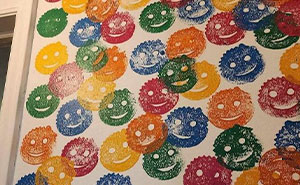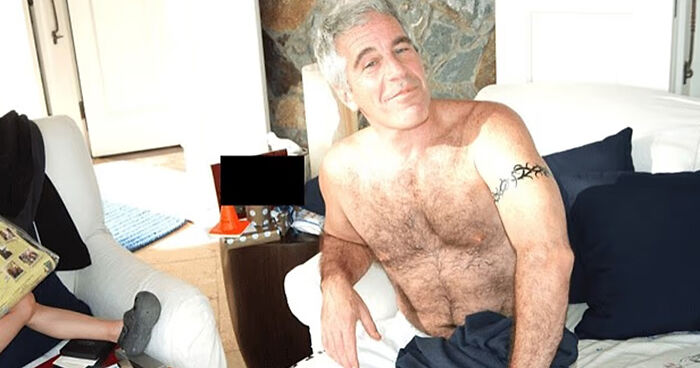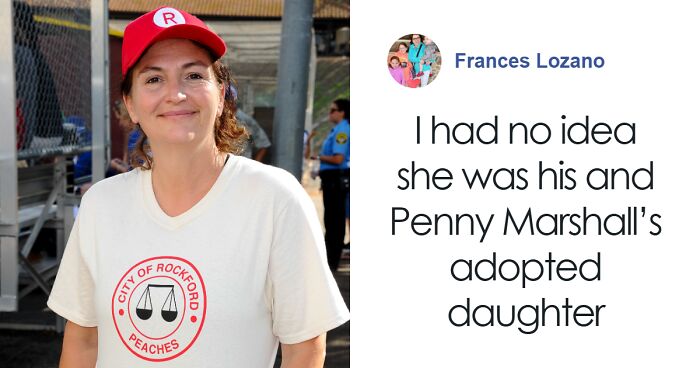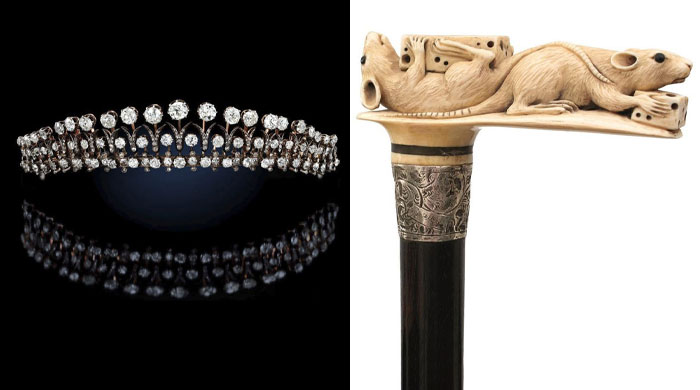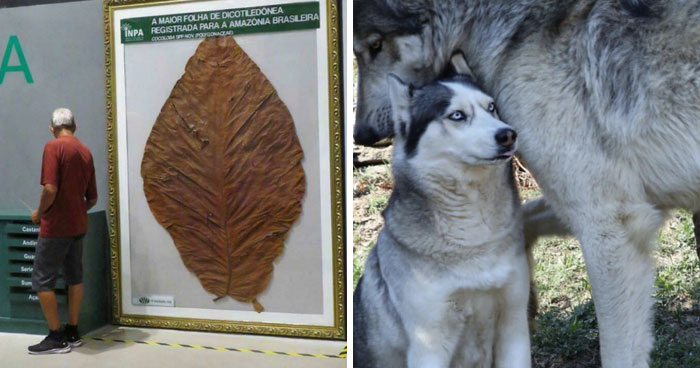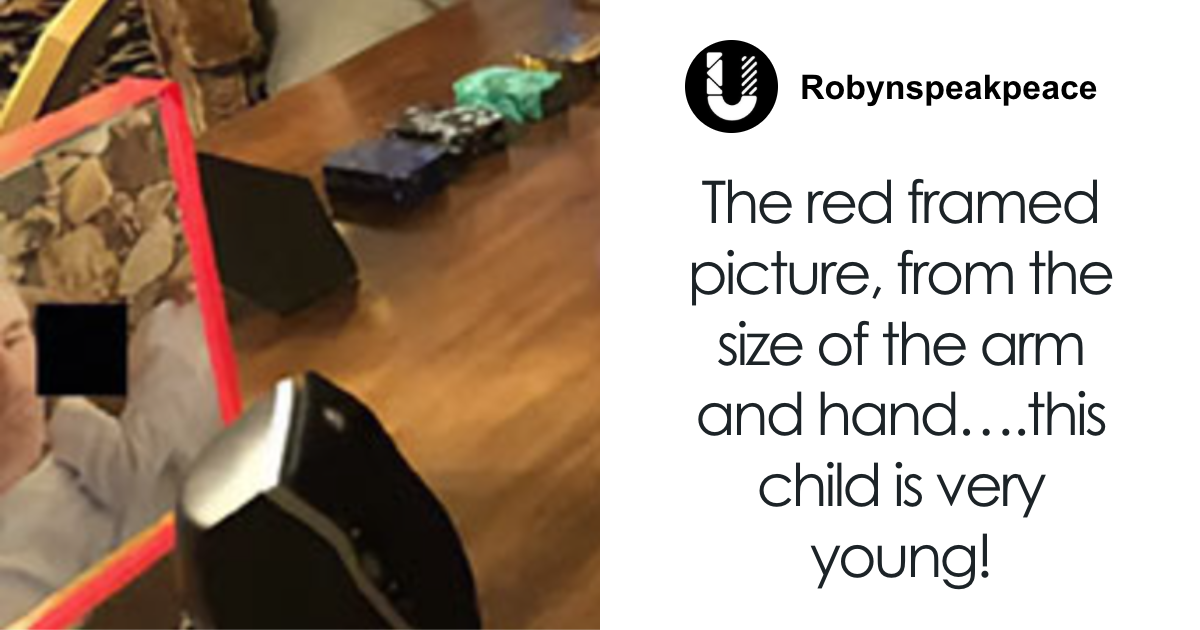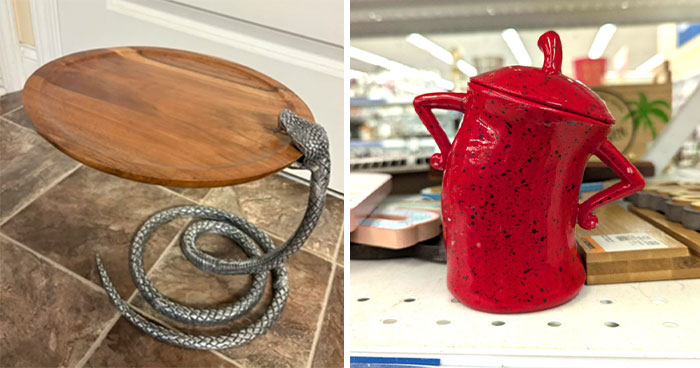
30 Fascinating Historical Photos That Offer A New Perspective On The Past
Interview With ExpertHistory books can only cover so much, and most of us haven’t cracked one open since we were in college. But if you want to learn about some fascinating moments from the past, accompanied by captivating images, you’ve come to the right place!
We visited the History Cool Kids Instagram account and gathered some of their best posts down below. Keep reading to find a conversation with Gemma Hollman, Author and Creator of Just History Posts, and be sure to upvote the stories that you’ll never forget!
This post may include affiliate links.
This is Adolfo Kaminsky. After his mother was k**led by Nazis in 1941, he joined the French resistance at age 17. He spend most of World War 2 in an underground laboratory in Paris forging passports. He is estimated to have saved the lives of 14,000 French Jews. “I’ll always remember our biggest request for documents. 300 children in 3 days. It wasn’t possible. I had to stay awake as long as possible. Fight against sleep. The math was simple. In one hour, I made 30 fake documents. If I slept for one hour, 30 people would die. My biggest fear was making a technical mistake, any little detail that might escape me. On every document rests the life or death of a human being. So I worked, worked, worked until I passed out. When I woke up, I kept working. We couldn’t stop." Kaminsky passed away in January 9th, 2023 at the age of 97.
Ronald (left) and Carl McNair (right) were born 10 months apart in the Segregated South. The two were inseparable as toddlers and well into adulthood. In 1959, 9-year-old Ronald McNair went to a public library in Lake City, South Carolina because he was looking for more advanced books on science. Carl accompanied his younger brother and described what happened next: "So, as he was walking in there, all these folks were staring at him — because they were white folk only — and they were looking at him and saying, you know, 'Who is this Negro? So, he politely positioned himself in line to check out his books. Well, this old librarian, she says, 'This library is not for coloreds.' He said, 'Well, I would like to check out these books.' She says, 'Young man, if you don't leave this library right now, I'm gonna call the police.' So he just propped himself up on the counter, and sat there, and said, 'I'll wait.'" The police and their mother were called to the library. Despite the librarian’s protest, the police officer allowed Ronald to borrow the books. Ronald went on to get a PhD in Physics from MIT in 1976 and then soon after, applied to join NASA. Carl supported his brother all the way, often in disbelief: “So how was a colored boy from South Carolina—wearing glasses, never flew a plane—how was he gonna become an astronaut?” Carl went on to say that “Ron was one who didn’t accept societal norms as being his norm… That was for other people… he got to be aboard his own Starship Enterprise.” Ronald became the second Black astronaut when he flew as a mission specialist from February 3rd to 11th, 1984. Ronald was then chosen to be one of the 7 astronauts onboard the space shuttle Challenger. He died along with six other crew members on January 28, 1986, at the age of 35. Today, the library that refused to lend him books is now named after him.
This is Gerda Weissmann Klein. She spent three years in several different N**i concentration camps. In late January of 1945, Gerda and 4,000 other Jewish women were forced to embark on a 350-mile death march to flee the advances of the Allied forces. By early May, Gerda was one of only 120 women who were still alive. The rest—including several of her childhood friends—had died from exhaustion, starvation, random executions, and exposure to the elements. Gerda was one day shy of her 21st birthday when she was rescued by American soldiers. Weighing only 68 lbs. (30.84 kg), Gerda’s hair was nearly white and her clothes were tattered and crawling with lice. She hadn’t taken a bath in three years. She later recalled seeing the man who saved her life: “I stood in the doorway of that factory, and I knew that I was free. I saw a strange car coming down the hill, with the white star of the American army on its hood. Two men in strange uniforms sat in it, we gathered them to be Americans. One of the men came towards me, and I looked at him with incredible awe and disbelief that I was looking at someone who fought for us. Of course I was terribly frightened. I looked at him and said, ‘we are Jewish.’ There was a long paused, then he said, ‘so am I.’ It was the greatest moment of my life. He asked me to come with him, and he held the door open for me. He has now been holding the door open for 50 years as my husband.” Gerda married Kurt Klein (swipe left) in Paris and moved to Buffalo, New York where they eventually had three children and eight grandchildren. Gerda became a human rights activist and published her own autobiography titled, "All But My Life." She is still alive today at age 97.
I clicked on the bottom instagram link to see him, as well, what a beautiful couple.
The History Cool Kids Instagram account has amassed an impressive 1.5 million followers since its creation in 2016. But the page’s success will come as no surprise if you take the time to scroll through its feed. It has shared over 1,400 posts over the past 9 years and told just as many stories about fascinating moments that have taken place in the past.
Whether you want to learn about what groceries cost a century ago or see what kinds of clothes your great-great grandparents might have worn, History Cool Kids has got you covered. No matter how much you think you know about the past, I’m sure at least one post on this list will teach you something new. So let’s get learning, pandas!
In 1996, Binti Jua, an 8-year-old female Western lowland gorilla, tended to a 3-year-old boy who had fallen into her enclosure at the Brookfield Zoo in Illinois. The child had climbed the wall and fallen 24 feet (7.3m), breaking his hand and receiving a large gash on his face. Binti walked over and cradled the boy in her arms. She carried him over to the service entrance and handed him over to her zookeepers. Her 17-month old baby, Koola clutched her back throughout the whole ordeal. For many months after the incident, Binti received special treats and food from her caretakers and drew in huge crowds. She is still alive today at 34 years old and has had three granddaughters and one great-grandson.
And stories like this make me smile, but looking at such a creature of great intelligence in a enclosure make me a little sad
This is Mary Ann Bevan. I had seen her photo on the Internet a few times with the caption: “The Ugliest Woman in the World” but thought there was more to her story than just her appearance. So I did some digging and was surprised to discover that she did not always look like this. If you swipe left, you’ll see a photo of her before she began to exhibit symptoms of Acromegaly, shortly after her marriage at age 32. Acromegaly is a hormonal disorder that occurs when the pituitary gland produces too much growth hormone after the growth plates have closed. The disorder affects 3 out of 50,000 people and typically enlarges the hands and feet, but may also increase the size of the jaw, nose, and forehead. Mary was born in 1874 to a middle class family and was the only daughter (she had 7 brothers). She studied medicine and became a nurse in 1894. Nine years later, she married Thomas Bevan and had four children. They were a happy family until Mary was struck with the unknown disease at the time. Her husband stayed by her side, but passed away suddenly from a stroke in 1914. Mary could not find a job due to her physical appearance. Out of desperation, she entered an “Ugliest Woman” competition and won. She put up with the humiliation and ridicule in order to provide for her family. In 1920, Mary was invited to the Dreamland Circus in Coney Island, where she worked until her death in 1933. She also made guest appearances for Ringling Bros. and amassed enough money to raise her four children. Bevan should be remembered as an amazing mother who did what she had to do to survive.
A Lego letter to parents from 1974. Here's the letter transcribed: "To Parents The urge to create is equally strong in all children. Boys and girls. It’s the imagination that counts. Not skill. You build whatever comes into your head, the way you want it. A bed or a truck. A dolls house or a spaceship. A lot of boys like dolls houses. They’re more human than spaceships. A lot of girls prefer spaceships. They’re more exciting than dolls houses. The most important thing is to put the right material in their hands and let them create whatever appeals to them."
To learn more about why history is so fascinating, we reached out to Gemma Hollman, FRHistS, Author and Creator of Just History Posts. She was kind enough to have a chat with Bored Panda and share what she loves most about studying history.
"I personally am fascinated by just learning what life was like for humans at any period of time," Gemma says. "I find it so interesting imagining how my life would have been different had I not been born at this exact moment in time, especially as a woman. One of my favorite things is to find the similarities between now and another time, whether that be 100 years ago or 5000 years ago. Although so much has changed in the world, so little of human nature has."
This is Dr. Eugene Lazowski, a Polish doctor who saved 8,000 Jewish people by creating a fake typhus epidemic in Stalowa Wola, a city in Poland that was occupied by the Nazis during World War 2. Here is an excerpt from the Chicago Sun-Times in 2006 about how Lazowski risked the N**i death penalty in order to carry out the Hippocratic Oath: "When the Nazis overran Poland in World War II, Lazowski yearned to find a way to fight back, to protect human life, and he seized upon a paradoxical instrument of salvation—the German army's profound fear of disease. While German industrialist Oskar Schindler, whose heroic story was told in the movie 'Schindler's List,' employed bribes and influence to protect as many as 1,000 Jews who worked in his factory, Lazowski slyly used medical science to save the lives of thousands of Jews and other Poles in 12 Polish villages. He and a fellow physician, Stanislaw Matulewicz, faked a typhus epidemic that forced the German army to quarantine the villages." Matulewicz discovered a bacteria strain that when injected into a person would cause them to test positive for typhus without suffering from the ill effects of the disease. Lazowski began to inject this bacteria strain into non-Jews because he knew that the Nazis would immediately k**l Jewish people infected with typhus. He then sent the blood samples to German labs. Once typhus was detected, the Nazis proceeded to quarantine the outbreak area. Lazowski kept track of how many "typhus" cases he was sending to the labs to make sure they actually correlated with how the disease typically progresses. The quarantine spared the lives of approximately 8,000 men, women and children from being deported to concentration camps. Lazowski kept his activities a secret, not even telling his wife. After the war, he moved to Chicago where he had to undergo more training to receive his medical license in the US. In 1981, he began working as a professor at the University of Illinois, eventually obtaining emeritus status. He passed away in 2006 at the age of 93.
This is the grave of Leonard Matlovich. After serving three tours in Vietnam, Matlovich became a recipient of the Bronze Star and Purple Heart. On March 6, 1975, after 12 years of service, Matlovich handed a letter to his commanding officer, declaring his homosexuality. Despite his accolades and exemplary military performance, Matlovich was deemed unfit for service and was promptly discharged. He sued for reinstatement and instantly became the most famous gay activist during a time when the LGBT movement was still struggling to establish legitimacy in the United States. Below is an excerpt from Matlovich's interview with Studs Terkel, just a few months after the discharge. "My philosophy now is that everyone in the world should be allowed to do what they want, when they want, where they want to do it, as long as what they’re doing does not violate the rights of another human being." "What two consenting adults do in their bedroom is their business and no one else’s. And for someone to put them down or… Just that two men can touch and love and have feelings of to want and be wanted and to need and be needed and to desire and be desired and just to love and be loved, I think is very, very beautiful. And that parents growing up today will give our little children guns, and we are very proud of them when they play Cowboys and Indians and run around. But when they show emotions and, and love, and two little boys touch, people get uptight, and they’re so afraid that their child may, may love. It’s very sad."
Frank Sinatra was a fervent anti-racist and an early activist during the civil rights movement. He refused to stay at hotels and play at clubs that did not admit black people. His band would also provide equal pay and treatment for black musicians. It was through his relentless and tireless efforts that Las Vegas quickly became integrated. In an interview in 2016, Frank Sinatra, Jr. had this to say about his father: "In the days when Las Vegas began to become popular, the black performers could play in showrooms, but they couldn't stay in the hotel. And it was Frank Sinatra who went to the board of directors, who had rather shady pasts, and he said, 'Are you guys going to come into the twentieth century, or aren't you?'...Somebody said 'Well, we have white people, we have black people." Sinatra, the story goes, said to them, 'The money is green. How about that?' And they began to look at each other and the wheels were turning, and because of Sammy (Davis), Las Vegas became integrated." Sinatra was also big-time supporter of Martin Luther King and helped him raise money to support the Civil Rights Movement by headlining fundraisers. In 1958, he wrote in Ebony Magazine: “A friend to me has no race, no class and belongs to no minority. My friendships are formed out of affection, mutual respect and a feeling of having something in common. These are eternal values that cannot be classified.”
"You can read about petty jealousies between courtiers, or the love of a parent for their child, and in that moment, you feel connected to someone who lived so long ago that it is almost incomprehensible," Gemma continued. "I think that sense of empathy is so important."
"People – rightly – state that history is important to study so that we can learn from the mistakes of the past, or identify patterns of where we might be going in the future, but I think the simple act of learning about someone’s life and what happened to them, in circumstances so far removed from our own, and finding something that we can understand, is such a human act," she added.
This is Irena Sendler, a Polish social worker and nurse who smuggled approximately 2,500 Jewish children out of N**i-occupied Warsaw. She entered the ghetto using a special work pass and would smuggle out children in the bottom of her toolbox and also utilize her burlap sack for larger kids. She also used ambulances and sewers to get them out of the ghetto. She was eventually caught by the Nazis and despite being tortured and having both her arms and legs broken, she did not reveal the names nor whereabouts of the children she had rescued. She was sentenced to death but managed to escape on the day of her scheduled e*******n after the Polish resistance bribed N**i officials for her release. She is quoted as saying, "Let me stress most emphatically that we who were rescuing children are not some kind of heroes. Indeed, that term irritates me greatly. The opposite is true. I continue to have pangs of conscience that I did so little." All the children Sendler had rescued had only known her by her code name, Jolanta. Many years after the war, a photo of Sendler appeared in a local newspaper. "A man, a painter, telephoned me," recalled Sendler, "'I remember your face,' he said. `It was you who took me out of the ghetto.' I had many calls like that!" Sendler lived to the age of 98, passing away on May 12, 2008.
A photo from the Bush to Obama transition, 2009. Here's an excerpt from a letter written by Barbara and Jenna Bush to Sasha and Malia. "...Sasha and Malia, here is some advice to you from two sisters who have stood where you will stand and who have lived where you will live: —Surround yourself with loyal friends. They'll protect and calm you and join in on some of the fun, and appreciate the history. —If you're traveling with your parents over Halloween, don't let it stop you from doing what you would normally do. Dress up in some imaginative, elaborate costume (if you are like us a pack of Juicy Fruit and a Vampiress) and trick-or-treat down the plane aisle. —If you ever need a hug, go find Ramsey. If you want to talk football, look for Buddy. And, if you just need a smile, look for 'Smiley.' —And, a note on White House puppies—our sweet puppy Spot was nursed on the lawn of the White House. And then of course, there's Barney, who most recently bit a reporter. Cherish your animals because sometimes you'll need the quiet comfort that only animals can provide. —Slide down the banister of the solarium, go to T-ball games, have swimming parties, and play Sardines on the White House lawn. Have fun and enjoy your childhood in such a magical place to live and play. —When your dad throws out the first pitch for the Yankees, go to the game. —In fact, go to anything and everything you possibly can: the Kennedy Center for theater, State Dinners, Christmas parties (the White House staff party is our favorite!), museum openings, arrival ceremonies, and walks around the monuments. Just go. Four years goes by so fast, so absorb it all, enjoy it all! ...Many people will think they know him, but they have no idea how he felt the day you were born, the pride he felt on your first day of school, or how much you both love being his daughters. So here is our most important piece of advice: remember who your dad really is."
Lepa Radić (1925 - 1943) was a Bosnian Serb who was executed at the age of 17 for shooting at Nazis during World War 2. In her last moments, they offered to spare her life in return for the names of her accomplices, but she refused by saying, "I am not a traitor of my people. Those whom you are asking about will reveal themselves when they have succeeded in wiping out all you evildoers, to the last man."
Another story from World War II was very similar, when asked to name her conspirators Radic said, “you will know them when they come to avenge me”.
Next, we wanted to know if Gemma has any personal favorite moments or time periods from the past.
"I honestly love all of history; give me a book or a TV show about anyone, from any country, from any time, and I’ll drink it in," she told Bored Panda. "But one period of history that has always resonated with me is the Black Death which hit Europe in the middle of the 1300s."
"In just a matter of years, it is estimated that half of the continent died. Whole towns vanished, entire families could be wiped out within a matter of hours, and society was irrevocably changed," the history expert continued. "I remember the first time I properly studied the outbreak, and just sitting in silence trying to imagine even a fraction of what that might have been like. I suppose we had something of a taste of this with Covid, but even that cannot begin to compare. You can understand why people would have thought the world was ending."
Neerja Bhanot was a 22-year-old flight attendant working on Pan Am Flight 73 when it was hijacked by terrorists during a layover in 1986. The terrorists quickly executed an Indian-American passenger and threw his body out the plane. They then instructed Bhanot to collect all the passports of the passengers onboard so they could properly identify other Americans. Bhanot instead hid the passports of the 43 other Americans onboard, hiding some under seats and throwing some others in the trash. After 17 hours of holding the plane hostage, the terrorists started to set off explosives and open fire. Bhanot managed to open the airplane doors and instead of fleeing and saving her own life, she started to guide the other passengers off the plane. She was killed while shielding three American children from a hail of bullets. A 7-year-old child that Bhanot helped protect went on to become a captain of a major airline, and he noted that she was his inspiration.
This is a photo of John Lewis being arrested in Tennessee for organizing and demonstrating during the Civil Rights movement, 1961. In the same year, at age 21, Lewis was attacked by two men in Rock Hill, South Carolina for attempting to enter a waiting room designated for "whites only". He suffered injuries to his face and ribs. Two weeks later, Lewis was arrested in Jackson, Mississippi where he was imprisoned at the State Penitentiary for nearly 40 days. His crime? He refused to leave the "whites only" area at a local bus station. Upon his release, Lewis and 12 other freedom riders went to Birmingham, Alabama where they were beaten by a mob made up of KKK members who were weilding baseball bats, metal pipes, chains and rocks. The group managed to escape to Montgomery where Lewis was hit in the head with a wooden crate. "It was very violent. I thought I was going to die. I was left lying at the Greyhound bus station in Montgomery unconscious," recalled Lewis. In 1965, Lewis was again leading a protest for Civil Rights, marching with some 600 people from Selma, Alabama to Montgomery. As they were leaving Selma, state troopers descended upon the protestors with clubs, bullwhips and tear gas. Lewis suffered a skull fracture on that day known as "Bloody Sunday." Fast forward to 2009—Lewis watched as Barack Obama was sworn in as the 44th President of the United States. When the inauguration came to an end, Lewis approached the first Black president with a piece of paper and asked if he could sign it. He wrote: “Because of you, John. Barack Obama.”
This is 18-year-old Alice Roosevelt and her long-haired Chihuahua named Leo in 1902. She also had a pet snake named Emily Spinach who she would wrap around on one arm and take to parties. Alice was extremely independent and unlike many women of her time, she was known to wear pants, drive cars, smoke cigarettes, place bets with bookies, dance on rooftops, and party all night. In a span of 15 months, she managed to attend 300 parties, 350 balls and 407 dinners. A friend of Alice’s stepmom once remarked that she was “like a young wild animal that had been put into good clothes.” Her stepmom went a step further and described her as a “guttersnipe” that went “uncontrolled with every boy in town.” William Howard Taft banned her from the White House after Alice buried a voodoo doll (of Taft’s wife) in the front yard. Woodrow Wilson also banned her after she told a very dirty joke (sadly no record of the joke exists) about him in public. Her father, Theodore Roosevelt famously said, “I can either run the country or I can attend to Alice, but I cannot possibly do both.” Alice once told President Lyndon B. Johnson that she specifically wore wide-brimmed hats around him so that he could not kiss her. During an interview in 1974, Alice described herself as a “hedonist.” She died in 1980 at the age of 96.
So if someone wants to expand their understanding of history, where should they begin? "I would suggest finding a medium they enjoy the most, and start by searching popular pieces from a range of periods," Gemma says. "This could be television, books, podcasts, or video games. If you’re enjoying consuming something – especially fiction – then it doesn’t matter how accurate it might be to start with."
"Once you’ve found something that sparks your interest, it’s easy to then want to dive into more," she noted. "Did that TV show portray that character how they really were? Did that podcast sensationalize that particular event, or was history really that wild?"
This is 23-year-old Bobbi Gibb in 1966, right after becoming the first woman to run the Boston marathon. A few months earlier, Gibb had received a letter in the mail, disqualifying her for the marathon. The letter stated that women are “not physiologically able to run a marathon.” The Amateur Athletics Union even went as far as prohibiting women from running more than 1.5 miles (2.4 km) and the organizers of the Boston Marathon did not want to “take the liability” of having a woman compete. However, the rejection letter only emboldened her. On the day of the race, Gibb showed up wearing a blue hooded sweatshirt over a black swim-suit and her brother's Bermuda shorts. She hid behind a bush near the starting line and waited. When the starting gun fired, Gibb waited some more until about half the runners had passed. She then jumped in and blended into the pack. However, it wasn't long before the men saw that she was a woman. To her surprise, she was not met with hostility, but with encouragement and support. She removed her sweatshirt and and finished the race in 3 hours and 21 minutes and 40 seconds, beating two-thirds of the runners. Diana Chapman Walsh, who later went on to become the President of Wellesley College, recalled that day many years later: "That was my senior year at Wellesley. As I had done every spring since I arrived on campus, I went out to cheer the runners. But there was something different about that Marathon Day—like a spark down a wire, the word spread to all of us lining the route that a woman was running the course. For a while, the 'screech tunnel' fell silent. We scanned face after face in breathless anticipation until just ahead of her, through the excited crowd, a ripple of recognition shot though the lines and we cheered as we never had before. We let out a roar that day, sensing that this woman had done more than just break the gender barrier in a famous race..."
Queen Elizabeth has died at age 96. She spent 7 decades on the throne, which was longer than the reigns of her father, uncle, grandfather, and great-grandfather combined. Born on April 21, 1926, Queen Elizabeth was older than sliced bread, penicillin, ballpoint pens, nylon, Velcro, the Slinky, and the FM radio. She reigned for nearly 30% of US history.
This is a portrait of Spanish spy and double agent, Juan Pujol Garcia in his uniform as a lieutenant in the Spanish Republic Army. Up until the breakout of World War II, Pujol was pretty much a failure in all aspects of his life. He had failed at being a student, soldier, businessman, and cinema magnate. Not to mention, his marriage was falling apart. When the war broke out, Pujol approached the British three different times to work for them. When they turned him away, he approached the Nazis, and they accepted him (giving him the codename Arabel). Once he earned credentials working as a N**i spy, he approached the Allies again, this time getting a job as a double agent (codenamed Garbo). He began to feed the Nazis a combination of misinformation that was true but useless. Any high-value information always got to the Nazis just a little too late. He even started a spy network consisting of 27 sub-agents. However, in reality, none of them existed. They were completely made up. Nevertheless, he submitted expense reports for them and the Nazis paid their salaries. At one point, Pujol had to explain why some high-value information got to the Nazis late. He told them that one of his spies had died and even managed to get the Nazis to pay pension to the imaginary spy's imaginary wife for her loss. Not only did his false information get the Nazis to waste millions of dollars, but he was also instrumental in convincing the Nazis that the attacks on D-Day were just a diversion, and the real attack was yet to come, keeping vital resources away from the front lines. Pujol is one of the only people to ever get an Iron Cross from the Nazis (which required Hitler's personal authorization, since he wasn't a soldier) and an MBE (Member of the Order of the British Empire) from King George VI After the war, Pujol feared that he would be hunted by surviving Nazis. In 1949, with the help of MI5, Pujol travelled to Angola where he faked his own death from malaria. He then moved to Lagunillas, Venezuela, where he set up a small bookstore and gift shop, living in anonymity until his death in 1988.
Gemma also recommends following historians on social media, "as they are great at promoting their own and others’ work, so it’s an easy way to discover new people to read or time periods to explore. And get stuck in!"
"The best way to learn is by doing. There are so many online courses around, or you can take a class, or create something of your own; I started writing a history blog years ago, and I learnt so much history just by researching for my own pieces of writing," she shared.
100 years ago—on May 31 and June 1, 1921—the Tulsa m******e occurred on "Black Wall Street," the wealthiest Black community in the United States at the time. Black businesses that flourished on Greenwood Avenue were attacked and destroyed by an angry mob. 35 city blocks were destroyed, 1,200 homes burned to the ground, an estimated 75 to 300 people were killed, and over 800 people were injured. Eyewitnesses said they even saw a dozen or more private planes in the sky dropping burning balls of turpentine onto the buildings. It has been called "the single worst incident of racial violence in American history." And yet the Tulsa m******e was not mentioned in any of the history books I read growing up and I would have never known about it had I not had this one history teacher... He gave the whole class an assignment to build a replica of Greenwood Avenue using paper, cardboard, index cards, paint and popsicle sticks. It took us almost a month to complete it... For the final part of the lesson, we took the replica and carefully carried it outside to the courtyard near the handball courts. Our teacher made us sit in a circle around the replica and let us take in what we had achieved. He then lit a match and proceeded to burn it down as we all sat there watching in horror. You can call it irresponsible, distasteful or cheap shock value—and this lesson will more than likely not fly in today's classroom—but this was Brooklyn during the late 90s. There were no such things as trigger warnings. 20 years later, I still vividly remember it and I have never forgotten. Source: The Burning: M******e, Destruction, and the Tulsa Race Riot of 1921 (2003) by Tim Madigan
A dancer bends over in front of the judge to show that her underwear was too large to expose anything anatomical. In 1983, three exotic dancers were arrested by undercover officers for violating Pinellas County’s anti-nudity ordinance. The dancers argued that their shorts were too big to show anything. The judge ended up agreeing with the dancers and the case was dismissed.
I bet that was a thrill for the judge -_- What a stupid case!
In 1973, Sacheen Littlefeather took the stage to reject an Oscar on behalf of Marlon Brando. She was given 60 seconds on stage to provide the following speech: “Hello. My name is Sacheen Littlefeather. I'm Apache and I am president of the National Native American Affirmative Image Committee. I'm representing Marlon Brando this evening and he has asked me to tell you in a very long speech, which I cannot share with you presently because of time but I will be glad to share with the press afterwards, that he very regretfully cannot accept this very generous award. And the reasons for this being are the treatment of American Indians today by the film industry – excuse me – and on television in movie reruns, and also with recent happenings at Wounded Knee. I beg at this time that I have not intruded upon this evening and that we will in the future, our hearts and our understandings will meet with love and generosity. Thank you on behalf of Marlon Brando.” She kept her full composure despite the boos and jeers coming from the audience. John Wayne had to be restrained by security because he wanted to physically a*****t her as she left the stage. Clint Eastwood mocked her by saying that he was presenting the award on behalf of “all the cowboys shot in all the John Ford Westerns.” Subsequently, Littlefeather was blacklisted by Hollywood and never worked in the film industry again. Nearly half a century later, Littlefeather will return to the Academy as a guest of honor on September 17, 2022.
John Wayne wanting to show what a Real Man he is by beating up a woman. What a prick
Finally, Gemma noted that social media has been so great for popularizing history. "So many people find it boring at school because it’s all about dates and facts and memorizing, but social media allows us to remember other aspects of history," she shared. "Whether it’s silly drawings in medieval manuscripts, ancient artefacts in museums, beautiful paintings or intriguing photographs, sharing history on social media has made it accessible to a huge range of people who can learn something new that they weren’t expecting."
A member of the Harlem Hellfighters (369th Infantry Regiment) poses for the camera while holding a puppy he saved during World War 1, 1918. The Harlem Hellfighters was a regiment made up of decorated Black soldiers who fought as part of the French army because the U.S. did not allow Black soldiers to fight alongside white soldiers. The French accepted the Harlem Hellfighters with open arms and did not racially segregate them. During World War 1, they fought on the front lines for 191 days, longer than any other American unit. And as a result, suffered the most casualties of any American regiment—losing approximately 1,500 men. Despite the heavy death toll and the poor replacement system, the Harlem Hellfighters never lost a trench or a foot of ground to the enemy; none of them became prisoners of war. Not only were they one of the most successful regiments of World War 1, but they also helped bring Jazz to France. Upon returning home, the Harlem Hellfighters received a welcome parade in New York City; a privilege that was denied to them before they had left for war. However, the celebrations were short lived as the summer of 1919 became known as the Red Summer, in which the country saw some of the worst racial violence since the Civil War. The Harlem Hellfighters who dreamed of returning home to a place that would finally treat them with respect and as equal human beings, quickly realized that nothing had changed at all.
Photographer Cecil J. Williams drinking from a white only water fountain, 1964. Williams was born in 1937 to parents of mixed ancestry: his mother was half-white and his father was half Native American. At the age of 9, Williams received a camera from his older brother and soon realized he could make money off his photographs. He photographed his first wedding at age 11 and by 12 he was taking photos of people on Sundays at church, charging them a dollar or two. By the 1950s, he turned his camera to documenting desegregation efforts in South Carolina. Some of his photos depict activities during the Briggs v. Elliott case, which was the first of five desegregation cases pushing to integrate public schools in the United States. In January of 1960, when Williams was a senior in college, he visited NYC and read that JFK was coming to a downtown hotel for a press conference. Williams wanted to snap some photos but forgot his press pass and was about to be kicked out by security when JFK stepped in and told them to let Williams stay. JFK gave Williams his personal address and soon he became one of JFK's favorite photographers during his campaign to become president. Williams is still alive at 81 years old and is currently spending his 2019 summer opening up his own museum, which will showcase more than 350 images and artifacts from the civil rights movement.
This is a photo of Hachikō, a Japanese Akita dog remembered for his unwavering loyalty to his owner. Hachikō belonged to Professor Eizaburo Ueno who lived in Shibuya and taught at Tokyo Imperial University during the early 1920s. Every day, Ueno would walk to Shibuya Station with Hachikō and take the train to work. Once he was done for the day, he would take the train back and return to the station at precisely 3 PM. Hachikō would always be there waiting patiently to accompany the professor home. One day, Ueno suffered a stroke and never arrived at the station. Hachikō went to the station every day for 9 years until his death in 1935.
Are you enjoying this list of historical stories, pandas? Keep upvoting the ones that teach you something new, and let us know in the comments what your favorite moments from history are. Then, if you’d like to see even more images that shine a new light on the past, we recommend checking out this Bored Panda list next!
The Huichol are Indigenous people that originated from the deep mountains of Central Mexico some 15,000 years ago. Today, they live in the Sierra Madre Occidental mountains and work as subsistence farmers, growing maize, beans, squash, and cucumbers. According to their ancient traditions, both men and women experience the pain of childbirth together. The father would position himself on the rafters with rope tied around his scrotum, which would be pulled by the mother during delivery. Today, we know very little of the medical knowledge and birth customs of the Indigenous people of the Americas because much of their hand-painted manuscripts were destroyed by Spanish conquistadors and missionaries who viewed them as “pagan” practices.
As it should be!!! If men were just as culpable as women, we would be a better world.
Behind the scenes from the British television show, Telletubbies, which originally aired from 1997 to 2001. In real life, the Telletubbies were actually very tall. The oldest, purple Teletubby, Tinky Winky, stood at 10 feet tall (305 cm). The red Teletubby, Po, was 6 feet 6 (198 cm) inches tall. The yellow Teletubby, Laa-Laa, was 6 feet 5 inches (196 cm). The green Teletubby, Dipsy, was 8 feet (244 cm). The show was filmed on an incredibly large set to create the illusion that the Telletubbies were small. The location of the set was so secret that visitors had to be blindfolded. Eventually, word got out and it became known that a sloping hill on a private field in Wimpstone, Warwickshire in England was the home to "Tubbytronic Superdome". After the show ended, tourists began to flock to the iconic set. The landowners became fed up with trespassers, stating that "it was never meant to be a tourist attraction. We had people jumping fences, crossing cattle fields and all sorts..." They ultimately decided to flood the entire set and it has now been underwater for nearly two decades. The set is now occupied by a family of swans and freshwater fish.
In 1960, David Latimer planted a spiderwort sprout inside of a large glass bottle, added a quarter pint of water, and then sealed it shut. He opened the bottle 12 years later in 1972 to add some water and then sealed it for good. The self contained ecosystem has flourished for more than 60 years. For those who are wondering how this is even possible: the garden is a perfectly balanced and self-sufficient ecosystem. The bacteria in the compost eats the dead plants and breaks down the oxygen that is released by the plants, turning it into carbon dioxide, which is needed for photosynthesis. The bottle is essentially a microcosm of earth.
French knife grinders were called ventres jaunes (“yellow bellies” in English) because of the yellow dust that would be released from the grinding wheel. This photo from 1902 shows the workers on their stomachs in order to save their backs from being hunched all day. They were also encouraged to bring their dogs to work to keep them company and also act as mini heaters by having them rest on their owners’ legs.
Frida Kahlo takes a family photo, wearing a 3-piece suit and holding a cane, 1924. Nearly 30 years later, in 1953, she writes a letter to Diego Rivera as she awaits surgery to amputate one of her legs. "I’m writing this letter from a hospital room before I am admitted into the operating theatre. They want me to hurry, but I am determined to finish writing first, as I don’t want to leave anything unfinished. Especially now that I know what they are up to. They want to hurt my pride by cutting a leg off. When they told me it would be necessary to amputate, the news didn’t affect me the way everybody expected. No, I was already a maimed woman when I lost you, again, for the umpteenth time maybe, and still I survived. I am not afraid of pain and you know it. It is almost inherent to my being, although I confess that I suffered, and a great deal, when you cheated on me, every time you did it, not just with my sister but with so many other women. How did they let themselves be fooled by you?" "...Let’s not fool ourselves, Diego, I gave you everything that is humanly possible to offer and we both know that. But still, how the hell do you manage to seduce so many women when you’re such an ugly son of a b***h?" The reason why I’m writing is not to accuse you of anything more than we’ve already accused each other of in this and however many more bloody lives. It’s because I’m having a leg cut off (damned thing, it got what it wanted in the end). I told you I’ve counted myself as incomplete for a long time, but why the f**k does everybody else need to know about it too? Now my fragmentation will be obvious for everyone to see, for you to see… That’s why I’m telling you before you hear it on the grapevine..." "...I’m writing to let you know I’m releasing you, I’m amputating you. Be happy and never seek me again. I don’t want to hear from you, I don’t want you to hear from me. If there is anything I’d enjoy before I die, it’d be not having to see your f*****g horrible b*****d face wandering around my garden. That is all, I can now go to be chopped up in peace. Good bye from somebody who is crazy and vehemently in love with you, Your Frida"
This is the right forearm of Michelangelo's Moses (c. 1513–1515) statue. The arrow points to a small muscle called the extensor digiti minimi, which only contracts when the pinky is lifted, otherwise it is invisible. Most of Michelangelo's sculptures are painstakingly detailed and you can clearly see his obsession with the human body, which he saw as a physical representation of the soul. Michelangelo always preferred sculpting over painting. Here's a letter he wrote to Giovanni da Pistoia (a member of the Florentine Academy) while painting the Sistine Chapel. "I’ve already grown a goiter from this t*****e, swollen up here like a cat from Lombardy (or anywhere where the stagnant water’s p****n). My stomach’s squashed under my chin, my beard’s pointing at heaven, my brain’s crushed in a casket, my breast twists like a harpy’s. My brush, above me all the time, dribbles the paint so my face makes a fine floor for droppings! My haunches are grinding into my guts, my poor a*s strains to work as a counterweight, every gesture I make is blind and aimless. My skin hangs loose below me, my spine’s all knotted from folding over itself, I’m bent taut as a Syrian bow. And because I’m like this, my thoughts are crazy perfidious tripe: anyone shoots badly through a crooked blowpipe. My painting is dead. Defend it for me, Giovanni, protect my honor. I am not in the right place—I am not a painter."
While the first article addresses the ongoing crisis in South Asia due to massive floods, the second article delves into fascinating historical moments captured visually. A discussion about the historical neglect of certain news stories and how they can shape our understanding of the present could benefit readers. Those interested in underreported events may also be intrigued by the narrative of substantial but less-covered occurrences, such as the South Asian floods.
Explore how such crucial stories often get overlooked in global conversations, overshadowed by more prominent headlines.
Advice on marriage written in a pamphlet by a suffragette in 1918. It is currently on display at the Pontypridd Museum in Wales, 1918
Face masks for every member of the family during the Spanish Flu including their cat, 1918. The Spanish Flu was one of the deadliest natural disasters in human history. In less than 3 years it infected 30% and killed up to 5% of the entire world population. The flu was especially lethal to healthy adults because their strong immune reactions ravaged their body, whereas the weaker immune systems of children and middle-age adults resulted in fewer deaths among those groups.
The heart of a blue whale, which can weigh in excess of 1,300 lbs (590 kg) and is the size of a small car. The gigantic heart beats 8 to 10 times per minute and each heartbeat can be heard from over 2 miles (3.2 km) away. Their arteries are so large that a full adult size human can swim through them. At birth, a baby blue whale is already 25 ft long (the size of an adult killer whale) and can drink up to 150 gallons (568 liters) of milk a day and gain as much as 200 lbs (90 kg) per day in its first year. They feed almost exclusively on krill, which are small, shrimp like invertebrates that are on average only 1 or 2 centimeters long. They eat 4 to 6 tons of krill a day. As an adult, they can grow up to a 110 ft (33 m) and weigh up to 180 tons. I find it so interesting that throughout history, earth has been home to some of the biggest animals, but the biggest one of them all happens to exist in our timeline, swimming right now in the deep ocean.
"For a small amount of perspective at this moment, imagine you were born in 1900... Then on your 14th birthday, World War I starts, and ends on your 18th birthday. 22 million people perish in that war, including many of your friends who volunteered to defend freedom in Europe. Later in the year, a Spanish Flu epidemic hits the planet and runs until your 20th birthday. 50 million people die from it in those two years. Yes, 50 million. On your 29th birthday, the Great Depression begins. Unemployment hits 25%, the World GDP drops 27%. That runs until you are 38. The country nearly collapses along with the world economy. If you were lucky, you had a job that paid $300 a year, a dollar a day. When you turn 39, World War II starts. You aren’t even over the hill yet, but don’t try to catch your breath. If you lived in London, England or most of continental Europe, bombing of your neighborhood, or invasion of your country by foreign soldiers along with their tank and artillery was a daily event...Between your 39th and 45th birthday, 75 million people perish in the war. At 50, the Korean War starts. 5 million perish. At 55 the Vietnam War begins and doesn’t end for 20 years. 4 million people perish in that conflict. On your 62nd birthday there is the Cuban Missile Crisis, a tipping point in the Cold War. Life on our planet, as we know it, could have ended. Sensible leaders prevented that from happening. In 2020, we have the COVID-19 pandemic. Thousands have died; it feels pretty dangerous; and it is. Now think of everyone on the planet born in 1900. How do you think they survived all of the above? When you were a kid in 1965, you didn’t think your 65-year-old grandparents understood how hard school was, and how mean that kid in your class was. Yet they survived through everything listed above. Perspective is an amazing art. Refined as time goes on, and very enlightening. So, let’s try and keep things in perspective. Let’s be smart, we are all in this together. Let’s help each other out, and we will get through all of this."
Perfectly preserved Roman mosaic floor discovered under a vineyard, just 12 kilometers outside of Verona, Italy. The multi-colored tiles likely date to the 3rd century A.D. These photos were posted on the town's Facebook page (Comune di Negrar di Valpolicella) with the following caption (translated from Italian): “After countless decades of failed attempts, part of the floor and foundations of the Roman villa located north of Verona, discovered by scholars a century ago, has finally been brought to light...The superintendent will now liaise with the owners of the area and municipality to identify the most appropriate ways of making this archaeological treasure, which has always been hidden beneath our feet, available and accessible.”
A Japanese couple poses for a selfie, 1920s. I dug a bit further to see if I could find more information about the couple. All I was able to come across was an article written by Hamish Campbell, a fine art and commercial photographer based in Tokyo, Japan. In 2014, he came across an abandoned home that was built in the Taisho Era of Japan (1912-1926). The last time it housed residents was some time in the 70s or 80s. On the second floor, he discovered a closet that was transformed into a dark room and inside were "over 200 glass plate negatives taken by a photographer almost 100 years ago." That photographer is the man you see in the photo above. Campbell writes, "These plates offer us an unprecedented look into the lives of the man and family who once lived in this house. We see the house’s construction, the photographer’s wedding, neighboring friends and family, and all manner of daily vignettes featuring recurring characters including a pet monkey." The search for any living direct descendants is still ongoing, so if anyone has more information about the individuals in the photo above, please let me know.
This ring was found on a woman who was buried approximately 1,200 years ago in Birka, an ancient Viking city located 30 km (19 miles) west of contemporary Stockholm, Sweden. What makes this ring special is that it is inscribed with the words "for Allah" in Kufic Arabic, which was widely used between the 8th and 10th centuries. The ring provides evidence of the direct contact between Vikings and the Abbasid Caliphate, the third caliphate to succeed the Islamic prophet Muhammad. I proceeded to go down a rabbit hole of various Arab travelers and the extent to which they traveled and explored the pre-modern world. The explorer who traveled the most in pre-modern history was a Muslim Moroccan explorer by the name of Ibn Battuta who is believed to have traversed 117,000 km (72,000 miles). He is followed by Chinese explorer Zheng He who traveled 50,000 km (30,000 miles) and Marco Polo who traveled 24,000 km (15,000 miles). I particularly love the original title of Ibn Battuta's travelogue: "A Masterpiece to Those Who Contemplate the Wonders of Cities and the Marvels of Travelling" (تحفة النظار في غرائب الأمصار وعجائب الأسفار). His work was later renamed to "The Travels" (الرحلة). Ibn Battuta never really set out to be a world traveler. He was bit by the travel bug when as a 21 years old, he embarked on a pilgrimage to Mecca, which typically lasted 16 months during his time. However, Ibn Battuta would not set foot in Morocco again for 24 years. "I set out alone, having neither fellow-traveller in whose companionship I might find cheer, nor caravan whose part I might join, but swayed by an overmastering impulse within me and a desire long-cherished in my bosom to visit these illustrious sanctuaries. So I braced my resolution to quit my dear ones, female and male, and forsook my home as birds forsake their nests. My parents being yet in the bonds of life, it weighed sorely upon me to part from them, and both they and I were afflicted with sorrow at this separation."
40 years ago today, Mount St. Helen's erupted. This was a photo taken by D**k Lasher who was hoping to get a glimpse of the volcano before it erupted. Here’s some background info by Gary Cooper, friend of Lasher. "He pulled over and attempted to turn around seeing as the ash cloud was heading his way and fast. In his hurry he bent the forks on his motorcycle. He jumped out of the car and ran up the hillside to get some pics, thinking he might just die for it, and hoping someone would find the camera at least as it was a phenomomenal sight that filled the sky. The first picture he took was the one with the Pinto cocked in the road and the bent motorcycle still in the back with that HUGE cloud going up in the sky in the background. He made his way back down the mountain after being quickly overtaken by the ash cloud. He was completely blinded, and had to drive on the opposite side of the road steering by staying right on the opposite side of the road heading into oncoming traffic, but encountered nobody going up. The car choked out after a while and he rode his bent motorcycle out of the mountains back to the room he had rented. The next day as soon as he could, he rode his motorcycle back up into the now really hot zone with his camera to get what pics he could. He was well into the red no go zone, when a helicopter saw him, and came right down and landed in his path. He was surprised to be arrested on the spot and flown out in the chopper and to jail. They left his motorcycle lay on the mountain. They also kept him in jail for a few days without letting him call anyone or even plead his case. When he finally got out, he again went back up there, (Not sure how) and was able to get his motorcycle back and I think later his car as well."
Joaquin Phoenix, New York, 1996. Photo by @georgeholzofficial "Joaquin had this nervous energy; I had all these set ups in mind but I realised right away he wasn’t the kind to sit still for a photograph. I threw all my ideas to the wind and we totally shifted gears. He went into the kitchen and there were all these dirty dishes stacked up. He said: ‘Man, these need a wash!’ and he put on an apron and just started scrubbing. In these kinds of situations being a photographer is a bit like being a boxer – you’re grabbing things. Joaquin definitely gave it to the camera but you had to catch it."
Abolitionist Fredrick Douglass was the most photographed American of the 19th century. He never smiled in a single photo in order to counter the notion of a happy s***e. Born in 1817 in Maryland, Douglass was enslaved from birth. At age 12, he learned the alphabet from the slaveholder's wife, however, his lessons were soon discontinued on the belief that it would foster a desire for freedom. But it was already too late. Douglass continued to learn from white children and others in his neighborhood. He began to read newspapers and devoured any books he could get his hands on. Soon he began teaching others how to read and write. More than 40 people would attend his secret lessons until it was broken up by an angry white mob. At age 16, Douglass was made to work for a brutal s***e master by the name of Edward Covey, who was known as a "s***e-breaker". He whipped Douglass so regularly that his wounds didn't have time to heal. The beatings were so bad it broke his body, soul, and spirit. One day, Douglass could not take it anymore and fought back and won. Covey could have had Douglass killed but he didn't want to risk his reputation. He never tried to beat him again. In 1838, after several failed attempts, Douglass managed to escape slavery by boarding a north-bound train and taking it all the way to New York City. A year prior to his escape, he had met a woman by the name of Anna Murray who was a free black woman living in Baltimore. He fell in love with her and she in turn helped him escape by providing him a sailor's uniform, part of her savings to pay for travel expenses, identification papers and protection papers. Douglass later wrote about seeing New York City for the first time: "A new world had opened upon me. If life is more than breath, and the 'quick round of blood,' I lived more in one day than in a year of my s***e life...I felt as one might feel upon escape from a den of hungry lions.'" Murray soon followed, and 11 days later, the two were married by a black Presbyterian minister. They remained married for 44 years until her death in 1882. Source: Frederick Douglass: Prophet of Freedom (2018) by David W. Blight
Prisoners Exercising (1890) by Vincent van Gogh. In 1888, Van Gogh, who was suffering from severe bouts of depression, cut his own ear off after getting in a fight with fellow artist Paul Gauguin. Others have stipulated that it might have been Gaugin who had cut off his ear during the scuffle, knowing that no one would believe the mad artist. A few months later after the incident, Van Gogh voluntarily committed himself to an asylum in Saint-Rémy-de-Provence. It was during this time that he wrote, "Sometimes moods of indescribable anguish, sometimes moments when the veil of time and fatality of circumstances seemed to be torn apart for an instant." Since the asylum limited him to the outside world, Van Gogh began to paint copies of works made by other artists. One of those works was Gustave Doré's 1872 engraving of Newgate prison yard in London. (swipe left). The painting shows a group of prisoners walking in circles around a small prison yard that is surrounded by brick walls. The prisoners walk past the guards so they would remember their faces. It has been suggested that the face of the prisoner in the center of the painting looking outward is Van Gogh himself. In the last two years of his life, Van Gogh averaged approximately three paintings a week. In total, he produced 900 paintings during a 10 year career, making him one of the most prolific artists to have ever lived.
ONCE UPON A TIME IN MONTANA , 1992. Photo and story by @georgeholzofficial "I was out in Montana in 1992, living out of the back of my pick-up with a fly rod and a Coleman stove, when I got a call from my agent. He said there was an assignment from People Magazine to photograph a relatively young, unknown actor who had just had a small part in Thelma and Louise. His name was Brad Pitt, and would I be interested? Brad was playing the lead in a movie adaptation of one of my favorite books, Norman Maclean’s A River Runs Through It. It was the bible of fly fishing, and Robert Redford was the director. It was very close to where I was fishing, so I decided to take one day off from my fishing. My assistant flew out from New York with my equipment, and the next day we met Brad at the river. He was there with his parents and hound dog, Deacon— no entourage at all. Nobody recognized him. I spent a leisurely day shooting with him down by the Gallatin and Yellowstone Rivers, and by train tracks in Livingston. While standing waist deep in the fast current, I gave Brad a few personal pointers in fly casting. Although he’d done some bait fishing as a kid, he hadn’t had too much experience with fly fishing before the movie. I loved that he just waded in to the water in his khakis and t-shirt. In the excitement of the moment photographing him and trout rising all around us, one of my cameras went swimming. He was so relaxed, so normal, with his nice family and his nice dog, it would have been easy to write him off as just another handsome young actor, but then, there was the part he was about to play. I remember squinting a little, trying to see the intense character in Maclean’s novel, the man 'haunted by waters.' He was there, chewing tobacco and squinting right back at me. Time would reveal that and so much more in this young kid from Missouri."
One of several intense teen crushes I had growing up in the 90s ^.^
The discovery of the ancient Statue of Antinous found in Delphi, Greece during an excavation in 1894 (colorized). Antinous was the Greek male lover of Hadrian, a Roman Emperor in the 2nd century. Antinous died of mysterious circumstances while riding a flotilla down the Nile river in October of 130. Theories put forth by scholars range from accidental drowning to human sacrifice to s*****e. Upon his death, Hadrian underwent a period of intense grieving and eventually deified his lover by building temples and placing statues throughout the empire. Hadrian held festivals, minted metals and coins, and even founded a city named Antinopolis in his honor. He even went as far as establishing a cult devoted solely to the worship of Antinous. Today, Antinous has more surviving sculptures than any other figure from classical antiquity except Augustus and Hadrian himself. Source: Lambert, Royston. Beloved and God: The Story of Hadrian and Antinous. Zebra, 1996.
Two childhood friends meet during a protest. One is a factory worker, the other is a riot officer. Guy Burmieux and Jean-Yvon Antignac were childhood friends but they chose different paths in life. On April 6, 1972 in Brittany, France, Guy was part of a protest to get better working conditions. Jean-Yvon and other riot officers were called in to quell the protestors. Guy remembers the moment: “I was part of the core of rebellious workers…We spent the night there, drinking coffee upon coffee. In the morning, the atmosphere was electric. After the police officers, the anti-riot police, it was the officers of the [Compagnies Républicaines de Sécurité 13] which emerged suddenly. There I found Jean-Yvon!” The photographer, Jacques Gourmelen, captured the moment when the two met face-to-face. Gourmelen, described what he saw: “I took the photo on instinct. Guy had recognized his old friend and classmate. I saw Guy going toward his old friend and grab him by the collar. Guy yelled with rage and told him, ‘Go ahead and hit me while you’re at it!’ The other one didn’t move a muscle.”
Operation Babylift was a mass evacuation of orphaned children from Vietnam to the United States and other countries such as France, Austria, West Germany at the end of the Vietnam War. In total, approximately 3,300 children were airlifted out of the country from April 3-26, 1975. On April 4, 1975, 250 orphans and 78 crew members were picked up by a C-5 cargo plane from Tan Son Nhut Airport at 4pm. 12 minutes into the flight, an explosion occurred on the lower rear fuselage, which caused rapid decompression. The crew attempted to turn the plane around and make an emergency landing at the airport, but crashed in a nearby rice patty and skidded for a quarter of a mile. The plane broke up into four parts. Of the 328 onboard, 175 survived. "I will never forget that day. It's as fresh to me right now as it was the day it happened," said flight nurse and first lieutenant Regina Aune. We put them in little groups and we secured them to the floor of the aircraft, with cargo tie-down straps and litter straps and blankets and pillows and whatever we could to kind of secure them to the floor. I remember thinking, this plane is crashing, and I am going to live through it, and I have to figure out how to take care of everybody once we finally come to a complete stop." Aune indeed survived the crash and her first instinct was to wade through the waist deep mud to look for the children and any other survivors. After helping carry 149 children to safety, Aune approached the rescue team and said, "Sir, I request to be relieved of my duties since my injuries prevent me from carrying on." She then passed out and was later treated at a hospital in Saigon where she learned that she had cuts all over body and suffered from a broken foot, a fractured leg, and a broken bone in her back.
Trump made doing something like this as we left Afghanistan virtually impossible by closing down all but one US air bases there. Gotta keep those immigrants out.
Acrobats in Paris, 1896. The footage depicts the the Kremos who were a family of acrobats. The original troupe was formed in 1880 by Josef Kremos who hailed from Czechoslovakia when it was still part of the Austro-Hungarian Empire. Josef married an Austro Hungarian equestrienne by the name of Franzisca Allinger and together they had 13 children, 12 of whom would eventually join the family acrobat business. The hardest trick (which was mastered by 3 of their children) was the triple somersault from their father's feet. The family legacy lives on with Kris Kremo (born in 1951) who is the third generation to perform and has continued the tradition well into the 21st century. His latest performance dates back to 2019. You can watch his amazing juggling skills on YouTube.
On March 18, 1944, 27-year-old Aimo Koivunen and his Finnish ski unit were patrolling Lapland (northernmost region of Finland that is part of the Arctic Circle) when they came under attack by Soviet forces. They soon found themselves surrounded by the numerically superior Soviets and had no choice but to retreat as quickly as possible through deep, untouched snow. Koivunen led the way, but soon found himself physically drained. He then remembered that he was carrying a package of Pervitin, an earlier version of crystal m**h that was used as a stimulant during World War 2. Popping one of these pills was equivalent to drinking several cups of coffee. It just so happened that Koivunen was carrying the entire supply of Pervitin for his unit. Koivunen struggled to pop a single pill into his mouth because he was wearing thick gloves and was still skiing like a madman to escape the Soviets. Since he could not risk slowing down, he decided to consume all 30 pills of pure m*thamphetamine. He noticed the effects right away. His exhaustion faded and he began to ski faster and faster. The Soviets were unable to keep up and his own unit disappeared behind him. Suddenly, Koivunen’s vision began to blur and he lost all consciousness. When he awoke, he was completely alone and had covered 100 kilometers (62 miles). He was still h*gh with no food or ammunition. His only chance of survival was to keep skiing. He had no idea where his unit was, but he knew the Soviets were still on his trail. During the next few days, Koivunen came across Soviet forces several times, but managed to escape each time. He even skied over a landmine, which exploded and left him badly injured and delirious, but not enough to k**l him. Drifting in and out of consciousness, Koivunen knew that he would quickly perish if he fell asleep for too long in sub-zero temperatures. He needed to keep skiing. Koivunen managed to finally make it back to safety after having traveled a total of 400 kilometers (250 miles). He weighed only 94 pounds, and his heart rate was still pumping at 200 beats per minute. He lived until the age of 71 and passed away in 1989.
This is Emma Gatewood, the first known woman to hike the 2,168 mile (3,489 km) Appalachian Trail solo in just one season. She did it in 1955 at the age of 67, wearing only Keds shoes and carrying an army blanket, a raincoat and a plastic shower curtain. She was also a mother of 11, a grandmother and a great-grandmother. While her feat is nothing short of remarkable, the public at the time did not know that Grandma Gatewood had suffered beatings and sexual abuse at the hands of her husband for 30 years. Whenever her husband became violent, she would often escape to the woods where she found a sense of comfort and tranquility. She was able to get a divorce in 1940 at a time when it was not very common. When asked about advice on hiking the Appalachian Trail, she said: "Make a rain cape, and an over the shoulder sling bag, and buy a sturdy pair of Keds tennis shoes. Stop at local groceries and pick up Vienna sausages... most everything else to eat you can find beside the trail... and by the way those wild onions are not called 'Ramps'... they are 'Rampions' ... a ramp is an inclined plane." Grandma Gatewood went on to hike the trail a second time in 1960 and a third time in 1963 at age 75. She became the first person to hike the trail more than once. In 1973, Grandma Gatewood died of a heart attack at age 85. At the time of her death she had 24 grandchildren, 30 great-grandchildren, and one great-greatgrandchild.
This is Aunt Polly Jackson from the 19th century. She was once enslaved, but managed to escape after she could no longer take the brutal working conditions that was forced upon her since birth and well into her old age. Like many others, Aunt Polly escaped slavery via the Underground Railroad and settled in Ripley, Ohio. She dedicated the rest of her life to helping others win their freedom by opening up her home and feeding those who either came to Ohio to settle or those who just needed some rest before continuing further up north. During this time, anti-abolitionists had set up what was called the reverse underground railroad which was a practice of kidnapping not only the enslaved that had managed to escape, but also those who were already free. The reverse underground railroad operated for 85 years from 1780 to 1865. Aunt Polly would deliberately dress herself to appear as a weaker older lady in order to fool the anti-abolitionists who typically were not interested in capturing older people. Her weapon of choice was a butcher knife, which she hid under her clothes and a kettle of boiling water. Aunt Polly was able to successfully fight off several s***e catchers while working along the Underground Railroad.
Triboulet was a jester for Louis XII (King of France from 1498 to 1515) who is perhaps most famous for slapping the king on the butt. This act greatly angered the king and he threatened to have Triboulet executed. After taking a moment to calm down, the king decided to spare Triboulet's life if he could think of an apology that was more offensive than what he just did to the king. Triboulet went on to say: "I'm so sorry, your majesty, that I didn't recognize you! I mistook you for the Queen!" Triboulet's response while clever and indeed more offensive, broke an order put in place that prohibited anyone from making fun of the queen. The king decided to proceed with the e*******n, but allowed Triboulet to choose how he would die. With his life on the line, Triboulet replied, "Good sire, for Saint Nitouche's and Saint Pansard's sake, patrons of insanity, I choose to die from old age." The speechless king could do nothing but just laugh. He cancelled the e*******n and decided to just banish Triboulet.
Salvador Dali cutlery set design from 1957. The set is comprised of six pieces made of silver-gilt. It includes two forks, two knives and two enameled spoons. Dali also took the time to name them as well: Fourchette-éléphant 3 dents (Elephant fork with three teeth) Cuillère-artichaut (artichoke spoon) Cocteau feuille (leaf knife) Fourchette 4 dents à manche poisson (Four tooth fork with a fish handle) Petite cuillère-artichaut (small artichoke spoon) Couteau escargot aux larmes (Snail knife with tears) The set sold for $28,125.
The RMS Queen Elizabeth pulling into New York with service men returning home after the end of World War 2, 1945. She was able to carry 15,000 people at a time, including 900 crew members.The trip from The British isles to the east coast of the United States usually took 5 to 7 days. During her service in World War 2, the RMS Queen Elizabeth transported more than 750,000 troops, and sailed a total of 500,000 miles (800,000 km).
Albert Einstein gives a lecture to a group of students at Lincoln University in 1946. The appearance was significant because Einstein made a habit of turning down all requests to speak at universities. In the same year, Einstein gave his views on American racism in an essay he wrote that was published in Pageant magazine. The following is an excerpt from that essay: "There is, however, a somber point in the social outlook of Americans. Their sense of equality and human dignity is mainly limited to men of white skins. Even among these there are prejudices of which I as a Jew am clearly conscious; but they are unimportant in comparison with the attitude of the 'Whites' toward their fellow-citizens of darker complexion, particularly toward Negroes. The more I feel an American, the more this situation pains me. I can escape the feeling of complicity in it only by speaking out… Your ancestors dragged these black people from their homes by force; and in the white man's quest for wealth and an easy life they have been ruthlessly suppressed and exploited, degraded into slavery. The modern prejudice against Negroes is the result of the desire to maintain this unworthy condition."
You don't need to be a genius to fully understand what he said here.
A forgotten age of open air classrooms in the Netherlands, 1957. The open air school movement originated in Europe at the beginning of the 20th century to help sickly children. Classes were taught in the middle of the forest—far away from urban centers—with the belief that good ventilation, clean air and sunlight contributed to the overall physical and mental well-being of the students. The schools were also built with the specific purpose of combatting tuberculosis (TB), an infectious disease which typically attacks the lungs. TB is spread through the air when an infected individual coughs, spits, speaks, or sneezes. TB has existed since ancient times. Scientists have discovered evidence of the disease in the remains of a 17,000-year-old Bison discovered in Wyoming. The remains of prehistoric humans and even Egyptian mummies from 5,000 years ago have displayed evidence of having had TB. In the 1800s, TB was one of leading causes of death in Europe, but by the mid 20th century, mortality rates had dropped considerably thanks to improvements in sanitation and other public health measures. The introduction of the Bacille Calmette-Guérin (BCG) vaccine in 1921 and the development of antibiotics helped curb the mortality rate even further. Today TB is curable and preventable. Despite this, it still killed 1.5 million people in 2018 and is one of the top 10 causes of death according to the World Health Organization (WHO).
When I was in primary school (80s) the classrooms only had a single wussy ceiling fan in each, so on the really hot days our teacher would move us out side to work under a tree in the shade. It was still bakingly hot but better than being in what was basically a shoebox. At recess and lunch he'd also gently mist anyone who wanted with the hose, it was great :)
The extremely detailed right hand of Michaelangelo's Statue of David that he created from 1501 to 1504. The statue was made from a single 6-ton slab of marble that had previously been discarded by two other sculptors due to flaws. The marble laid outside, exposed to the elements for 26-years before a 26-year-old Michaelangelo won the contract. He began on September 13th, 1501 and spent the next two years of his life carving out the iconic statue. The Statue of David stands 17 ft (5.18 m) tall and has an enlarged head and right hand due to the fact that it was originally supposed to be placed on the roof of the cathedral, so these parts had to be proportionally visible from below.
The underground city of Derinkuyu (located in central Turkey) was built in the 8th - 7th centuries BCE and reaches a depth of 200 feet (60 m). At one point it sheltered as many as 20,000 people. It is the largest of the 200 underground cities discovered in Cappadocia, Turkey. The hidden city went 18 stories underground and was built with ventilation to provide fresh air and shafts to provide water to its inhabitants. Derinkuyu also had space for stables, storage rooms, chapels, guest rooms as well as a winery. While there are debates regarding who built Derinkuyu, most scholars believed it was the Phrygians, an Indo-European people that carved up the city in volcanic rock. However, as the Phrygians' power waned under the Roman Empire and their language slowly became extinct, Derinkuyu eventually came to be occupied by Greek Christians seeking refuge from war and persecution. By the Byzantine era, Derinkuyu was fully expanded and was used as protection from the Arabs during the Arab–Byzantine wars (between the 7th and 11th centuries). In the 14th century, Derinkuyu sheltered its inhabitants from the Mongols. When the region fell into the hands of the Ottomans, Derinkuyu once again provided refuge from the Turkish leaders. In 1923, the underground city was abandoned when the Christian inhabitants were expelled from Turkey and relocated to Greece. In 1963, the underground city was rediscovered when a resident of the area found a mysterious room behind a wall in his home. Further digging revealed access to the tunnel network connecting Derinkuyu.
102-year-old Filipino tattoo artist, Whang-od Oggay, who is the last to hold the title of "Mambabatok"—the name given to traditional tattooists by the Kalinga ethnic group for thousands of years. For 80 years, Oggay has been single-handedly keeping the ancient tattooing tradition alive, utilizing citrus thorn to p***k the skin after she marks the tattoo design on the skin using a mixture of charcoal, water and tribal tattoo ink. Traditionally tattoos were only awarded to male warriors as a symbol of their bravery and courage. And the number of tattoos on their body directly correlated with the number of heads they took. This tradition has long since ended and now Oggay provides tattoos for everyone. Oggay has never married and has no children of her own. “I have boyfriends but when I was 25 years old the man I loved died during the Japanese occupation, so instead of marrying another I choose to dedicate my life to tattooing. Through it I support myself and my village. In fact, the proudest moment in my life was when I started tattooing.”
Albert Einstein and Marie Skłodowska Curie reminiscing by a lake in 1929. Back in 1906, Curie had lost her husband Pierre when he was killed by a horse-drawn cart while crossing a busy street in Paris. She mourned his death for a few years before finding comfort in Pierre’s protégé—Paul Langevin, a married physics professor who was separated from his wife because she was physically abusive. When Langevin's wife discovered that Curie was involved with her husband, she hired someone to break into their apartment and steal their love letters, which she promptly leaked to the press. Curie's name was dragged through the mud, and soon an angry mob gathered in front of her home. Curie and her daughter went into hiding and stayed with a family friend. Langevin entered into a duel with one of the tabloid editors to defend Curie's honor. The two men faced each other, but no shot was fired. Meanwhile, Einstein wrote the following letter to Curie to offer his support and voice his solidarity. "Highly esteemed Mrs. Curie, Do not laugh at me for writing you without having anything sensible to say. But I am so enraged by the base manner in which the public is presently daring to concern itself with you that I absolutely must give vent to this feeling. However, I am convinced that you consistently despise this rabble, whether it obsequiously lavishes respect on you or whether it attempts to satiate its lust for sensationalism! I am impelled to tell you how much I have come to admire your intellect, your drive, and your honesty, and that I consider myself lucky to have made your personal acquaintance in Brussels. Anyone who does not number among these reptiles is certainly happy, now as before, that we have such personages among us as you, and Langevin too, real people with whom one feels privileged to be in contact. If the rabble continues to occupy itself with you, then simply don’t read that hogwash, but rather leave it to the reptile for whom it has been fabricated. With most amicable regards to you, Langevin, and Perrin, yours very truly, A. Einstein" In 1911, at the peak of the scandal, Curie went on to win her second Nobel Prize in Chemistry.
There's a photo from the first Solvay conference with Einstein, Curie, and Langevin. Curie is the sole woman (head down with Henri Poincaré), Langevin is far right, and Einstein's stood next to him. https://en.wikipedia.org/wiki/Solvay_Conference
Helmet graffiti during the Vietnam War. "A true war story is never moral. It does not instruct, nor encourage virtue, nor suggest models of proper human behavior, nor restrain men from doing the things men have always done. If a story seems moral, do not believe it. If at the end of a war story you feel uplifted, or if you feel that some small bit of rectitude has been salvaged from the larger waste, then you have been made the victim of a very old and terrible lie. There is no rectitude whatsoever. There is no virtue. As a first rule of thumb, therefore, you can tell a true war story by its absolute and uncompromising allegiance to obscenity and evil." —Tim O'Brien, The Things They Carried I first read Tim O'Brien's book as a freshman in college and soon became fascinated with the Vietnam War. I watched Platoon and Apocalypse Now and even took a history class on the Vietnam War. The one thing I'll never forget was when the professor handed all of us a transcript of Ho Chi Minh's speech that he gave in central Hanoi in 1945, 20 years prior to the U.S. invasion. His speech began: "'All men are created equal. They are endowed by their Creator with certain inalienable rights, among them are Life, Liberty, and the pursuit of Happiness.' This immortal statement was made in the Declaration of Independence of the United States of America in 1776. In a broader sense, this means: All the peoples on the earth are equal from birth, all the peoples have a right to live, to be happy and free. The Declaration of the French Revolution made in 1791 on the Rights of Man and the Citizen also states: 'All men are born free and with equal rights, and must always remain free and have equal rights.' Those are undeniable truths. Nevertheless, for more than eighty years, the French imperialists, abusing the standard of Liberty, Equality, and Fraternity, have violated our Fatherland and oppressed our fellow-citizens. They have acted contrary to the ideals of humanity and justice."
The worn down steps of the Great Wall of China. If you ever have a chance to visit the Great Wall of China, you will quickly realize that the steps are uneven and very steep, making them difficult to walk up and down. I remember having to use my hands to maintain my balance. While time has certainly taken its toll, the stairs were deliberately designed with varying heights so that unsuspecting invaders who were unfamiliar with the wall would trip or fall, ultimately slowing them down. Some other interesting facts that I learned about the Great Wall of China is that it is not one single wall. It is actually a series of walls with some parts in North Korea and Mongolia. If all the walls were connected and straightened out to actually make one giant wall, it would be equivalent to 1.8 times the diameter of the earth. The diameter of the earth is 7,456 miles (12,000 km), whereas the Great Wall of China is 13,170 miles (21,196 km) long. And contrary to popular belief, the Great Wall of China cannot be seen from space!
21-year-old Yves Saint Laurent at Christian Dior’s funeral, 1957. I thought this was a cool photo and was going to write about YSL and his relationship with Dior, but it was quite a short one that can be easily summed up in YSL’s own words, “Dior fascinated me. I couldn't speak in front of him. He taught me the basis of my art. Whatever was to happen next, I never forgot the years I spent at his side." More interestingly, I did discover that Christian Dior had a younger sister named Catherine (swipe left) who was part of the French resistance during World War 2. In 1944, she was captured by the Gestapo and tortured. She was then sent to Ravensbrück and Buchenwald concentration camps, surviving both places before being liberated near Dresden in 1945. When Catherine returned to Paris, Christian barely recognized her because she had lost so much weight. She was too sick to eat the welcome feast he had prepared for her. Catherine went on to testify against the Nazis and won several awards for her acts of resistance, including the Legion of Honour, the highest French order of merit. Christian Dior named his first perfume— Miss Dior—after his little sister. Catherine was also in attendance at her brother’s funeral but I could not find any photos of her from that day. She shunned the spotlight, but I thought her story was worth sharing. Catherine lived until the age of 90 and passed away in 2008.
An exhibit at the Bronx Zoo in New York City with the following caption: "You are looking at the most dangerous animal in the world. It alone of all the animals that ever lived can exterminate (and has) entire species of animals. Now it has the power to wipe out all life on earth." The story ran in the Illustrated London News on June 8, 1963, which provided some more context: "In the Great Apes House at the New York Zoo is to be seen an exhibit of great interest and one which speaks for itself. The exhibit in question is that of 'The Most Dangerous Animal in the World' and it is handled by the Zoo authorities with not unsubtle deftness. Between the Orang-Utan and Mountain Gorilla cages is a compartment with bars and the legend which can be read in the photograph above: visitors, attracted by the proclamation at the top of the cage, stop and peer into the cage. What they see is, without a doubt, the most dangerous animal in the world, and the frequent comment by visitors is 'It’s true!' for they are looking into a barred mirror. And there is considerable truth in this simple, but effective statement that is made."
A young couple by the Waterhen River in Saskatchewan, Canada in 1931. Photo by Paul Coze. When I first saw this photo, I felt happiness for the young couple. I zoomed into their faces and noticed their smile and gaze into each other's eyes. I also noticed his sharp cheekbones, his hair braids, and the single feather, perched proudly on his head. I noticed the woman wearing a headband with what appeared to be some sort of flower in the front. I then wondered how their life turned out. Did they stay together? Did they end up having kids? Did they reach old age? My eyes then focused on the blanket wrapped around him and I could not help but think about smallpox. When I was younger, I remember reading in my history textbooks that the U.S. Army deliberately engaged in biological warfare by giving infected blankets to the Indigenous people. When I dug deeper into the topic, I was surprised to learn that while the U.S. Army did commit numerous atrocities, there is no evidence to suggest a widespread plot to spread smallpox via blankets. The story is said to have been spread by a University of Colorado professor who was later fired for fabricating version of events and falsifying sources. However, I was able to find one confirmed case of smallpox blankets being used deliberately for biological warfare. During the Pontiac War in 1763, a fur trader by the name of William Trent, who was a captain at Fort Pitt, wrote about his meeting with two Delaware people. He wrote, "Out of our regard to them we gave them two Blankets and an Handkerchief out of the Small Pox Hospital. I hope it will have the desired effect." Trent submitted the invoice to the British Army, with a note mentioning that the items were "taken from people in the Hospital to Convey the Smallpox to the Indians." British Army general, Thomas Gage, approved the expense.
The Prehistoric Snuggle. 250 million years ago, an injured amphibian known as Broomistega tried to find shelter from Earth’s most severe extinction event known as the Great Dying. During this time, large amounts of carbon dioxide were emitted by volcanic eruptions, which led to an increase in global temperatures and the acidification of the oceans. 70% of life on the supercontinent of Pangea went extinct. Nearly all marine life was wiped out. The Broomistega managed to crawl down a small warm burrow that was occupied by a dormant Thrinaxodon, a direct ancestor of mammals that was roughly the size of a fox. Although researchers did find two possible puncture marks on the Broomistega, they did not match the dental configuration of the Thrinaxodon. The Broomistega was suffering from broken ribs, but it showed signs of healing, which indicated that its injury was not caused by a struggle between the two Triassic creatures. Researchers also ruled out the idea that the Broomistega was washed into the lair due to the narrow passageways of the burrow. Their peaceful cohabitation came to an end when a muddy flood buried them in the burrow while they dozed off together.
Dutch men in traditional trousers, 1900. Weather conditions largely dictated the clothing style in the Netherlands during this time. The traditional male outfit consisted of woolen pants with silver buttons on the front square flaps (similar to Mickey Mouse's outfit) as well as wooden clogs, shirt, jacket and hat. The size and shape of the hat would vary depending on the specific region. I visited Amsterdam a few years ago and I absolutely loved it—probably because there's so much rich history without the snobbiness. I got to see the artworks of some of my favorite artists (Van Gogh, Vermeer, and Rembrandt) and also had the opportunity to visit Anne Frank's house, which was worth it even after spending several long hours waiting on line (I went early too!). Indonesian food was very good and I had it more than I would like to admit. I also accidently walked on a bike path and had (what I assumed) awful Dutch words hurled at me, which I totally deserved. The language sounds to me like the inebriated lovechild of English and German and as a New Yorker I appreciated that the people were blunt but not rude without reason. I'm going to really miss the city when it goes under due to climate change, but I don't think that'll happen for a long time. Knowing the Dutch, I'm pretty confident that they'll figure out a way to keep it at bay for as long as possible. My most controversial opinion: Amsterdam > Paris.
This is Lonnie Johnson. He is a NASA rocket scientist, nuclear engineer and an inventor with over 100 patents. He also accidentally created the best selling water toy of all time—the Super Soaker. First person he squirted with the Super Soaker: "I don't actually remember the first person I squirted. You know I remember the first time I shot the gun and I gave it to my daughter and let her play with it. But I think the first memorable person was actually when I was at an office function when I was in the air force and my coworkers were there. I was a captain in the military at the time and this major who outranked me saw me holding the gun and said 'captain what is that?' I said 'it is my water gun sir' and he said 'does it work?' I said 'Yes, sir' and I turned and shot him right between the eyes. It was hilarious. Of course after that the whole picnic turned into a riot we were throwing water beer from cups and everything it was a great ice breaker we had a great time." Favorite invention besides the super soaker: "That is like asking what is my favorite child, haha. Actually, I have a hard time choosing. I can say that there are five or four top highlights: my robot that I built when I was in high school, of course, was a game changer for me. The Super Soaker, the Nerf dart guns, my invention on the Galileo spacecraft, the lithium battery technology that I'm developing right now, the solid state batteries as well as the lithium fuel cells. And of course, the heat engine - my engine that converts heat directly into electricity without any moving mechanical parts. So those are the things that are highlights. I can't say one is my favorite because they all have had dramatic impacts on my life." Advice to kids who want to be inspiring inventors: "My advice for kids who are inspiring inventors is to persevere. Don't give up your visions and the things that you want to make sometimes only you can see them. Only you can realize what potential impact it could have. When I built my first robot it was with an erector set and I think I may have been about 6 years old at the time."
Windows on the World was located on the 107th floor of the World Trade Center North Tower. It was considered one of the best restaurants in New York City and in its final year of operation, was the highest grossing fine dining establishment in the United States. The staff was known for speaking more than 60 different languages and referred to themselves as the U.N. of restaurants. In 1976, New York magazine ran a cover story called, "The Most Spectacular Restaurant in the World," in which restaurant critic Gael Greene wrote the following: "Every view is brand-new? a miracle. In the Statue of Liberty Lounge, the harbor's heroic blue sweep makes you feel like the ruler of some extraordinary universe. All the bridges of Brooklyn and Queens and Staten Island stretch across the restaurant's promenade. Even New Jersey looks good from here. Down below are all of Manhattan and helicopters and clouds. Everything to hate and fear is invisible. Pollution is but a cloud. A fire raging below Washington Square is a dream, silent, almost unreal, though you can see the arc of water licking flame. Default is a silly nightmare. There is no doggy doo. Garbage is an illusion." On 9/11, 79 employees of the Windows on the World lost their lives. It is believed that the photo of the "Falling Man" was one of the workers at the restaurant based on his uniform.
''The Falling Man'' is believed to be the brother of Alex Briley, the Soldier from the original Village People. A day in history that is burned into my brain.
Office life before the invention of AutoCAD and other drafting softwares. Prior to the release of AutoCAD in 1982, engineering drawings were all done by hand using different grade pencils, erasers, T-squares and set squares. Even after all the manual labor, if a change was required, the engineers and toolmakers had to start from scratch and make the sketches all over again. Nowadays, architecture designers and other drafters are mainly just clicking their mouse and keyboard and not hunched over on a giant desk wondering if any changes will be made to their final drafts.
The original Michelin Man from 1894. The Michelin Man is white because rubber tires are naturally white. It was not until 1912, that carbon chemicals were mixed into the white tires, which turned them black. The change was structural, not aesthetic. By adding carbon, tires became more durable. Michelin also began reviewing restaurants so that more people would travel further distances in their cars to eat at these restaurants. This in turn would wear down their tires faster, and force them to buy more. The star system that Michelin uses goes up to three and is broken down by whether or not it's worth driving to the restaurant. One star: "A very good restaurant in its category" (Une très bonne table dans sa catégorie) Two star: "Excellent cooking, worth a detour" (Table excellente, mérite un détour) Three star: "Exceptional cuisine, worth a special journey" (Une des meilleures tables, vaut le voyage).
Queen Elizabeth II had two "hidden" cousins named Nerissa (left) and Katherine Bowes-Lyom (right) who were both born with severe learning disabilities. Daughters to John Herbert Bowes-Lyon (brother of the Queen mother and uncle to Queen Elizabeth II) and his wife, Fanella, Nerissa was born in 1919 and Katherine was born in 1926. Following the death of their father in 1930, the sisters were admitted to the Royal Earlswood Hospital, a mental health institution located in Redhill, London. The Royal family then declared that they both were dead. In reality the sisters were alive and spent the next several decades in the hospital. On April 6, 1987, British tabloid newspaper, The Sun, broke the story with the headline: "QUEEN'S COUSIN LOCKED IN MADHOUSE." Nerissa died at age 66 in 1986. When the hospital shutdown in 1997, Katherine was moved to another home in Surrey. She died at age 87 in 2014. There was no evidence that any of the royals visited them.
"Wait for me, Daddy!" (1940). Photo taken by Claude P. Dettloff 5-year-old Warren Bernard reaches out to his father as he marches off to serve in World War 2. Shortly, after this photo was taken, his father went on a ship with his regiment to Nanaimo, which was 3 hours away. They would spend the next two years defending the coast from potential German and Japanese attacks. In 1942, most of the regiment—including Warren's father—were shipped off to England where they wouldn't see much action until D-Day, 1944. Warren wouldn't be reunited with his father again until October 1945 (swipe left). Warren grew up and moved to Tofino, where he met his wife, Ruby. She fondly recalls seeing her husband even before they actually met because the photo you see above “was hung in every school in British Columbia during the war. I saw him years and years before we actually met," she said.
A boy stares at a TV screen for the first time in 1948. Curious, I looked up the inventor of the electronic television and learned that it was by an American name Philo Farnsworth. Interestingly, he was totally disappointed by his own invention because he had hoped it would be exclusively used for education and not entertainment. However, he changed his mind when he watched Neil Armstrong walk on the moon on the very device he invented, confiding to his wife that "this has made it all worthwhile." Ironically, his only televised appearance was on a game show called "I've Got A Secret" in 1957. When asked what he's currently working on, Farnsworth discusses the potential to hopefully one day create display-only (flat-screen) type of television. He also talks about increasing bandwidth, improving cameras, creating memory files, and harnessing the power of nuclear fusion. All very impressive for a guy who grew up in a small log cabin that was built by his father in Beaver, Utah.
Portrait of a Filipina/Chinese woman from the Philippines, 1875 📸: Francisco Van Camp I've always wondered why Filipino is not spelled Philipino, since the country is spelled the Philippines. So I did some digging and discovered that the "ph" sound doesn't really exist in Tagalog (the national language of the Philippines). Most native Filipinos will pronounce it as "pilipino" instead, which is typically shortened to "pinoy." The reason the country is called the Philippines is because the country was named after King Philip the II (1527 - 1598) of Spain. Before the first European explorers arrived in the Philippines, there was no national identity, only clans and tribes spread out across the archipelago. This made it very easy for the Europeans to conquer the region since the division already existed amongst the people. The Portuguese explorer Ferdinand Magellan was the first European to come in contact with the Philippines in March 1521. Magellan was driven by fervent religious zeal to convert the local tribes to Christianity and as a result, got embroiled in a local political dispute and was killed during battle. Although he is often credited as the first person to circumnavigate the world, Magellan himself never completed the journey. After his death, his crew was captained by Juan Sebastian Elcano who continued the journey and arrived in Spain in September 1522, which was nearly av year and a half after Magellan's death. Approximately 80% of the original crew members died during the voyage around the world. The first person to actually complete the trip around the world is Enrique of Malacca. He was Magellan's s***e who was picked up in Malacca before the journey, and upon Magellan's death, bailed on the expedition as he was able to recognize the languages the local inhabitants were speaking in the Philippines.
Margaret Hamilton as the Wicked Witch of the West, 1939. Despite terrifying multiple generations playing the Wicked Witch, Hamilton in real life was a kindergarten teacher who was devoted to the education of children. She was so concerned about the impact her role had on kids that later in life, she even made a guest appearance on Mister Rogers to show kids that she was actually a nice and kind woman. She came wearing regular clothes and on the show, she dressed into the Wicked Witch costume to show the audience that was playing a fictitious character and that it was all make believe. She became good friends with Fred Rogers and Mr. McFeely, the delivery man. Here's Hamilton's own words on being casted as The Wicked Witch: “He [casting director] said they’re sort of interested in you for a part in the Wizard of Oz and I said, ‘Oh gosh, think of that.’ I said, ‘I’ve loved that story from the time I was 4-years old. What is it?’ And he said, ‘Well the Witch.’ And I said, ‘The Witch!?’ And then he said the final thing, ‘Yes, what else?’”
When the movie came out, Hamilton had a young daughter. She didn't want her daughter to become frightened and confused by seeing her mother as the evil witch while she was too young to distinguish fact from fiction. She was furious when the movie was shown at a Hollywood birthday party her daughter attended.
“The latest photographic trick, a rocket firing camera that shoots from above.” –Světozor, a Czech-language entertainment magazine, published on February 17, 1911. In 2013, the Oxford dictionary officially added "selfie" as a word, defining it as "a photograph that one has taken of oneself, typically with a smartphone or webcam and uploaded to a social media site." The actual origin of the word can be traced back to 2002, when an Australian man got drunk on his 21st birthday and posted a photo of his stiched lip with the words, "sorry about the focus, it was a selfie." The very first photo considered to be a "selfie" can be traced back to a chemist and photographer by the name of Robert Cornelius from Philadelphia. He brought his camera to the back of his family's store, opened the lens cap, and then put himself in the frame by sitting motionless for approximately one minute. On the back of the photo, he wrote: "The first light picture ever taken. 1839." Cornelius went on to successfully run a photo studio, taking photos of the wealthy. However, he soon lost interest in photography and turned his attention to growing his family's lighting business. He invented a device called a "solar lamp," which used lard instead of whale oil, which made him a wealthy man. He also went on to invent the first kerosene lamp, but was soon overtaken by competitors who created cheaper and more efficient versions of his lamp. Cornelius' selfie from 1839 was not discovered until 1975 when a librarian happen to come upon it while working at the American Philosophical Society in Philadelphia.
One of the earliest photos of a surfer at Waikiki Beach, carrying an alaia board in 1898. While reading about the history of surfing, I came across this passage in a travelogue called "Roughing It" by Mark Twain, which was published in 1872. Apparently Twain was one of the earliest writers to have witnessed surfing in the Hawaiian Kingdom. He writes: "In one place we came upon a large company of naked natives, of both sexes and all ages, amusing themselves with the national pastime of surf-bathing. Each h*****n would paddle three or four hundred yards out to sea (taking a short board with him), then face the shore and wait for a particularly prodigious billow to come along; at the right moment he would fling his board upon its foamy crest and himself upon the board, and here he would come whizzing by like a bombshell! It did not seem that a lightning express-train could shoot along at a more hair-lifting speed. I tried surf-bathing once, subsequently, but made a failure of it. I got the board placed right, and at the right moment, too; but missed the connection myself. The board struck the shore in three-quarters of a second, without any cargo, and I struck the bottom about the same time, with a couple of barrels of water in me. None but natives ever master the art of surf-bathing thoroughly."
Charles the II of Spain was the result of nearly 200 years of inbreeding. The House of Habsburgs stopped introducing new genes at around 1550, leading to a circular family tree (swipe left). Charles the II had been born the son of an uncle-niece relationship, and historians Will and Ariel Durant described him as "short, lame, epileptic, senile and completely bald before 35, always on the verge of death but repeatedly baffling Christendom by continuing to live." Before the age of six, Charles the II had managed to survive an onslaught of diseases which included chickenpox, measles, rubella, and smallpox. He could not walk until he was 8-years-old and could not chew food on his own. His tongue was so large that no one could understand what he was saying. The nuncio papal Millini provided the following description of Charles the II: “The king is rather short, skinny, but not badly formed, only ugly in the face; he has a long neck, a long face, a long chin and as if it bent upwards; the lower lip typical of the Habsburgs; not very large eyes, turquoise blue and a fine and delicate complexion. He has a look with melancholy on his face and a little astonished. His hair is blond and long, and it is combed back so that the ears are exposed. He cannot straighten, unless he leans against a wall, a table or something else. His body is as weak as his mind. From time to time he shows signs of intelligence, memory and a certain liveliness, but not now; he usually looks slow and indifferent, appearing dumbfounded. You can do whatever you want with him, since he lacks of own will." Charles the II's death in 1700 (at the age of 39) led to the War of Spanish Succession and the dissolution of the The House of Habsburgs. His autopsy report stated that his "heart was the size of a peppercorn; his lungs corroded; his intestines rotten and gangrenous; he had a single testicle, black as coal, and his head was full of water."
This is Mary Mallon, aka Typhoid Mary, photographed after being institutionalised on North Brother Island in New York, 1909. She is the first recorded asymptomatic carrier of typhoid, a bacterial infection that is spread by eating food or drinking water that has been contaminated with the feces of an infected person. Mallon worked as a cook in New York City from 1900 to 1907. During this time, she infected 51 people. One family hired a typhoid researcher by the name of George Soper who believed Mallon was the reason for the outbreaks. He was able to finally track her down and notified her that she may be unknowingly spreading the disease. When he asked if he could collect her urine and stool samples, Mallon refused. Soper even told her that he would write a book and give her all the royalties. She still refused. In 1907, Mallon was forced into quarantine at a hospital on North Brother Island in New York, located on the East River between the Bronx and Rikers Island. In 1910, she was released under the condition that she change her occupation. Upon her release, Mallon began working as a laundress which paid less than cooking. She did that for several years until she decided to change her name to Mary Brown and go into cooking again. In 1915, she started a massive outbreak at Sloane Hospital for Women that infected 25 people and killed two. She was caught by authorities and imprisoned for the rest of her life.
Apparently she was one of those people who do their own research.
These boys were called pinsetters. My dad did this when he was a boy, and his dad, my grandfather, was a maintenance man. (Those hardwood lanes take a beating from those bowling balls.) Later, the pinsetters were replaced my machines, and my dad became a pinsetter mechanic. As the popularity of bowling waned, he went on to work for the city until his retirement.
Soba noodle delivery, Tokyo, 1935. Since there were no telephone lines during this time, soba deliverymen had to bike to different locations such as universities where they would sell to their regular customers. Many of the soba noodle shops from this era are still open today. Honke Owariya is the oldest soba restaurant that is still in operation today. It is located in Kyoto, Japan and was founded in 1465. The current owner is Ariko Inaoke who is currently the 16th owner in her family. She took over the restaurant from her father after working as a fashion photographer. Soba enjoys a long rich history within Japanese society that goes back several centuries. Ramen, however, has a much shorter history and is actually of Chinese origin. While there are claims that Japanese ramen originated as far back as the 17th century, there are no specific historical records indicating the actual cooking of ramen. The first bowl of Japanese ramen was most likely served at the opening of Rai-Rai Ken in Tokyo, which is hailed as the birthplace of shoyu ramen (soy sauce ramen). The restaurant hired Cantonese cooks and called their dish "shina soba" (shina, meaning "China"). Ramen was called shina soba until the 1950s. In 1958, Momofuku Ando, invented instant noodles, which was hailed as the greatest Japanese invention of the 20th century.
Four skiers sunbathe in the snow in Sun Valley, Idaho, 1946. Next to them is a spread of sliced white bread, olives, lox and some sort of soup. Photo by George Silk. My initial thought of the photo was that it looked very European and I was very surprised that this was in Idaho. I did a little bit of digging and discovered that Sun Valley has quite the history. Ernest Hemingway finished his book, "For Whom the Bell Tolls" while staying at the resort in 1939. Celebrities like Clark Gable, Gary Cooper, Errol Flynn, Lucille Ball, Marilyn Monroe, and several members of the Kennedy family were all frequent visitors. During World War 2, the Sun Valley resort was closed in 1942 and was used as a hospital for the U.S. Navy. The resort was reopened to the public in December, 1946, which was when this photo was taken.
The indigenous people of North Sentinel Island (which is approximately the size of Manhattan and located in the Indian ocean) have been living there for an estimated 60,000 years. Approximately 80 to 150 people live on the island and subsist on a hunter-gatherer lifestyle that is reminiscent of the Stone Age. They do not engage in any agriculture. There have been several attempts to contact the tribe from the outside world but most have been met with virulent hostility. In 1771, an East India Company ship observed "a multitude of lights ... upon the shore" of North Sentinel Island but did not land to investigate. In 1867, an Indian merchant ship was forced to land on the island due to heavy monsoons. After spending three days on the island, the crew was attacked by a barrage of arrows. They managed to fight back with sticks and stones until the Royal Navy arrived to their rescue. In 1880, the British came back to the island and managed to come upon a small village located inland, which had been hastily abandoned. They ended up kidnapping 6 Sentinelese who all became ill after being exposed to the outside world. In 1896, an escaped convict managed to reach the island. A search party found his body riddled with arrows and his throat slit. In 2018, an American Christian missionary went to the island in hopes of converting the indigenous people. He wrote in his diary, “Two armed Sentinelese came rushing out yelling... They had two arrows each, unstrung, until they got closer. I hollered, 'My name is John. I love you and Jesus loves you.'" Despite several warning shots, one of which pierced his bible, John continued to approach the people on the island. He was killed by arrows and his body was buried by the beach. His body has yet to be recovered.
College dorm at the University of Illinois in 1910. While the photo looks old and dated, there is something remarkably modern about it. Perhaps it has to do with the desire to hang up photos and posters in your dorm room, which hasn't changed in more than a century. I remember the pre-internet shopping days when I would go to my local Blockbuster and browse through these giant poster flip racks, which made these loud clanking noise as you turned them. I must have bought several movie posters to decorate my bedroom and college dorm. If you look at the left side of the photo, you can see a prominent poster of a woman who appears to be a sword swallower from a sideshow, which was very popular during this time. I also noticed they look a lot older than your typical college students, but that probably has more to do with their hairstyle and the clothes that they're wearing. Sunscreen wouldn't be invented for another 28 years. It also didn't help that at the turn of the 20th century, Americans could go to any pharmacy and purchase a gram of pure c*****e for 25 cents. Smoking was also seen as fashionable during this time and its link to lung cancer had yet to be published. If you look at their feet, you can see that they're clearly touching, a sign of physical affection. During this time, it was quite common for straight men to take portraits showing an unusual degree of physical intimacy, which included holding hands and sitting in each other's laps. To the modern eye, these men may appear as gay lovers—which they could have very well been—but most likely it meant nothing more than just two men enjoying each other's camaraderie. As for the spoons, hanging on the wall, I'm not too entirely sure. Perhaps, it was used as an instrument during their late night jamming sessions?
The spoons were hung up like that so they wouldn't lose them. At that time, the mess hall where the students ate, required students to bring their own cutlery, and most students just defaulted to eating with a spoon, as you could cut with it, and it could do the same thing a fork would do.
Mugshot of John Wojtowicz who unsuccessfully tried to rob a bank in 1972 to pay for his wife Eden's gender reassignment surgery. Apparently, Wojtowicz had based his plans on the movie, "The Godfather" (1972) which he had watched earlier that day. 2,000 onlookers, FBI, roof-top snipers, TV crew, and police all gathered at the Chase Manhattan bank in Gravesend, Brooklyn on a hot summer night. Wojtowicz held 7 hostages for 14 hours during which time he demanded food for the hostages, paid the pizza delivery boy wads of cash, threw money at the outside onlookers, shot through the bank's exit rear door (fearing the police would storm it), and accidentally fired a shot after dropping his rifle on the floor. In the end, His robbery attempt failed and he was arrested and sentenced to 20 years in prison of which he served five. Wojtowicz's story was later turned into a movie called "Dog Day Afternoon" (1975) starring Al Pacino and John Cazale, both of whom, interestingly enough, had starred in "The Godfather". For the rights to his story, Wojtowicz was paid $7,500 and 1% of the movie's net profits, which he gave to Eden. After her operation, Eden married someone else before dying of AIDS-related pneumonia in 1987. Wojtowicz attended her funeral and delivered a eulogy.
I honestly had no idea that this type of surgery was possible in the 70s. That’s pretty amazing!
The original Michelin Man from 1898. The Michelin Man is white because rubber tires are naturally white. It was not until 1912, that carbon chemicals were mixed into the white tires, which turned them black. The change was structural, not aesthetic. By adding carbon, tires became more durable. Michelin also began reviewing restaurants so that more people would travel further distances in their cars to eat at these restaurants. This in turn would wear down their tires faster, and force them to buy more. The Michelin star system goes up to three and is broken down by whether or not it's worth driving to the restaurant. One star: "A very good restaurant in its category" (Une très bonne table dans sa catégorie) Two star: "Excellent cooking, worth a detour" (Table excellente, mérite un détour) Three star: "Exceptional cuisine, worth a special journey" (Une des meilleures tables, vaut le voyage). The Michelin Man also has a name—Bibendum. It's a weird name considering the latin phrase, "Nunc est bibendum," which means, "Now is the time to drink." The phrase appears in the first line of a poem (written by the Roman poet Horace) celebrating the death of Cleopatra, Queen of Egypt, in 30 B.C.
This is George Moore aka the living skeleton and Fred Howe aka the fatman who were sideshow perfomers from the late 19th century. Here is an excerpt about them in Strand Magazine from 1897: "...Fred Howe’s father was a carpenter at Alleghany City, Penn., and Fred started to learn the same trade, but soon became too fat. At the age of eighteen he joined the Forepaugh Circus as a 'fat boy,' and there met his present sparring partner. George Moore was born in Helena, Montana, where his father had a little dry goods shop. Until he was twenty-one years of age George worked in his father’s shop. But his greatest desire was to see the world. When the first big circus came to Helena, the manager offered him an engagement to exhibit himself as the 'living skeleton,' and he closed with the offer at once. Fred Howe, they soon became great friends. The doctors advised both to take as much exercise as possible—the one to gain flesh, and the other to get rid of it. These smart Yankee lads then resolved to combine duty with pleasure, so they went in for boxing. For a long time they practised privately. One day, however, the manager was told of the fun by some of his 'freaks,' who had been allowed to see a 'set-to' between the two gladiators. The manager then arranged a round or two, and the moment he saw Howe and Moore face each other, he offered them a long engagement at an increased salary, if only they would do their boxing before the public. To-day these funny fellows are not only expert boxers, but also perfect comedians in their 'art.' Their boxing is uproariously funny. Moore is 6ft. 3in. (190.5 cm) in height, and weighs but 97lb. (43.9 kg), whilst Howe is only 4ft. 2in. (127 cm) high, and weighs exactly 422lb. (191 kg)"
Halloween on the school bus, 1980s. The history of trick-or-treating can be traced back some 2,000 years ago to an ancient pagan festival called Samhain, which was celebrated by the Celts from October 31st to November 1st. During the festival, it was said that the dead came back to the land of the living. To appease these spirits, they would provide food, bonfires, and sacrifices (livestock and crops). Around the 9th century, as Christianity spread throughout Europe, Catholic festivals such as All Hallows’ Eve (Oct. 31), All Saints’ Day (Nov. 1), and All Souls’ Day (Nov. 2) became more popular. During these time, poor children would walk from house to house, begging for money or "soul cakes" (a round cake made of nutmeg, ginger, cinnamon, and raisins with a cross on top). In return, they would sing and pray for the souls of the providers. The practice became known as souling. By the late 1800s, Irish immigrants fleeing the potato famine and other European immigrants brought over the traditions of celebrating All Hallow's Eve. By the 1920s, the practice of souling evolved into pranks and mischief. When the Great Depression hit, the tradition saw the rise of vandalism, destruction of property, and in some instances, violence. As a response to the increase in crime, local communities began to curb the chaos by putting together activities and throwing parades. Homes were encouraged to give out treats as a way to encourage good behavior. As the Great Depression came to an end and sugar rations were lifted, candy companies saw a golden opportunity to make money. By the 1950s, Halloween had become the holiday that we know of today.
Dating tips for women from Parade Magazine back in 1938. Seeing these ridiculous dating tips, I can't say I was too surprised considering the time period. I did, however, come across one Interesting article in Time Magazine dating back to March 11, 1957, which was quite eye-opening to say the least. Apparently in the 1950s, the idea of teenagers having stable monogamous relationships ("going steady") was actually frowned upon by parents and viewed as amoral by the church. In fact, teenagers were encouraged to go out with different people every weekend. Here's an excerpt from the article: "U.S. mating habits have undergone quite a change in the last generation, and the change is worrying leaders of the Roman Catholic Church. Far from being charged with lack of seriousness and fickle habits, youth is now being reproved for being too serious and not fickle enough. Instead of using their adolescent years to meet as many of the opposite sex as possible, to learn their ways and appraise their worth, teenagers are trending more and more to 'go steady.' By definition, boys and girls who go steady dance together exclusively (cutting in is frowned upon), sip their sodas, absorb their double features and spin their platters in each other's company or not at all. Steady-going girls indicate their unavailability in various ways, ranging from the old-fashioned fraternity pins and class rings to certain arrangements of pigtails or bobby pins. Parents often encourage these relationships as stabilizing or 'cute.' But Catholic authorities view them as a danger to morals so serious that last month the principal of St. Anthony's parochial high school in Bristol, Conn. expelled four students for going steady, and the current issues of two Catholic magazines attack the custom."
I remember when I was in high school I hated the idea of being asked out because it basically meant you were in an instant relationship. I wanted to just go on dates to get to know different people, but that wasn't the done thing at the time.
The last queen of Mongolia, 1920s. Queen Genepil (1905-1938) was the last queen of Mongolia and wife of the last Mongol Khan. After the death of her husband, she was arrested and executed in 1938, as part of the systematic Stalinist destruction of Mongolian culture and any reminders of the old regime. A vast number of the population were killed, including almost all the shamans and Buddhist lamas of Mongolia. It is estimated that between 20,000 and 35,000 "enemies of the revolution" were executed, which represented 3 to 5 percent of Mongolia's total population at the time. Genepil's daughter, Tserenkhand, who managed to survive the Great Purge, recalled the sudden disappearance of her mother as a child saying, “They took her away at night. She did not wake us, only left a piece of sugar on our pillows. I still remember the joy of a sudden discovery of that rare delicacy in the morning”.
THIS IS NOT THE LAST QUEEN OF MONGOLIA! She is an unknown Mongolian woman posed before an unknown Chinese photographer. This photo I'm posting is Queen Genepil Queengenepil.jpg 
Halloween in the 1930s. Although it is often associated with the supernatural, a full moon on Halloween is a rare occurrence. It only happens every 18 to 19 years. Interestingly enough, the next one will be on Halloween 2020. This coming October, there will be two full moons: one on Thursday, October 1st and the second one will occur on Saturday, October 31st. Since the full moon falling on Halloween will be the second of the month, it will be a Blue Moon.
Bored Panda Staff: "Let's repost this list every week. It's easier than finding new content."
Bored Panda Staff: "Let's repost this list every week. It's easier than finding new content."

 Dark Mode
Dark Mode 

 No fees, cancel anytime
No fees, cancel anytime 
















































































































